#i mean mario in general is one of my biggest spins so like
Explore tagged Tumblr posts
Text
genuinely wondering how long this ttyd fixation is gonna last
#i mean mario in general is one of my biggest spins so like#itll always be in the back of my head#even if im not actively drawing stuff related#aughhj. ttyd was good.iliked it#it has problems. but i would still def consider it one of my top games#the cast is so fun 😭❤️❤️❤️ sooo many great characters like sheeesh#ahhh papered mario
9 notes
·
View notes
Text
Answering some OC asks
cool-human-98 said:
Since there's not much info about Ness, I'm really interested in what he's like. What do you have on him so far? Of course I'm asking about things that are not spoilers
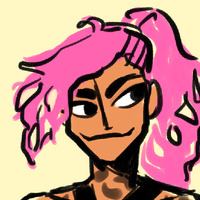
Ness is 17, which makes him the youngest character in the entire story, and he acts like it too. He’s very careless, loud and free-spirited, with a good sense of what’s right and wrong.
He absolutely doesn’t know when it’s not the right time to have a big mouth and can get himself in trouble by talking too much, or not following directions.
He’s very eager to meet new people, because he didn’t have many chances to do so in the past due to reasons I don’t want to disclose yet.
He makes very quick judgements and will often make a decision in the spur of a moment, not really thinking about the consequences of it. He’s very much led by his heart more than his brain.
He loves comics and power metal, and I think the fact that Gloryhammer is his favourite band says quite a bit about him.
My friend once said he's a personification of the Ultra Pink Monster Energy drink and that’s a pretty good summary of him (thought I’d say he’s more of the Pipeline Punch flavour).
behold-a-bastard-in-this-house said:
Are there any details on Ciril's curse, maybe? As in, how he gained it and when? Thank you much!

Without spoiling too much of the core conflict of the story, Ciril’s curse was basically caused by him being too curious and going to places he shouldn’t have gone to. I am not fully set on the timeline of how long ago he’s been cursed, because it has to be lined up with events regarding some other characters (Mario and Ren), and I haven’t really sat down and properly match it up yet, but he’s been cursed for a couple of years at this point.
The curse slowly saps his energy, making him physically extremely weak; there are times when he can’t even get out of bed, and some days he can only move around with a wheelchair. He’s only 32 years old but looks much older.
While the process of the curse is slow, living with it at this point is terrible, as he’s not just weak, but he also can’t taste food, he’s constantly cold, his overall feelings feel very numb. It’s clearly out to kill him, and he has no idea how to lift it. Because death is his biggest fear, and he feels like he’s running out of time, he’s very desperate to save himself by any means necessary.
Anonymous said:
Does Vivid have a favorite meme?
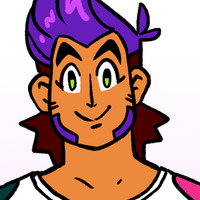
Dabbing & Minecraft, no questions about it.
blacksheep28 said:
What's Vivid's big dream in life?
He’s not really a person with any big plans for the future, he keeps his options open! One thing he definitely wants is to make things that bring joy to people.
In the current time, he’s an actor in a community theater. Sometimes he plays guitar and sings on the streets and then gives his earnings to those in need, since he loves to perform, but he doesn’t really need any additional income, so he just does what he can to bring some overall good vibes to his community. If any bars have an open stage, you know he’s there.
He can play a guitar and piano, however he doesn’t want an actual career as a musician, or an actor, as he’d find that restricting. Basically, he’s just vibin’
bayygel said:
Who is most likely to cry when surprise punched in the face? Who is least likely to cry? I hope this question is up to your standards, Jim :) because I for one am very curious!
Vivid is a HUGE weenie when it comes to pain, his pain tolerance is non-existent. He will cower at any threat of pain, despite being pretty muscular and big. Being an actor, he’s able to put up an intimidating charade if necessary, but if his bluff is called he immediately retreats to avoid any further confrontation.
As for least likely.. About half the characters are pretty damn tough. Mario and Barbi would be hard to push to crying through pain (Barbi would cry from frustration sooner than from pain), and Ren is stone-cold. However, Otto is a clear ‘winner’ here, as life got him to a point where he’s too jaded to really care about much anymore, and that includes pain (which he has an extremely high tolerance for, he could probably lose a limb and not care)

Anonymous said:
I don't have a particular question but I'd love to hear more about ren! i guess if you need something more specific then maybe something about her sibling kind of relationship with mario?
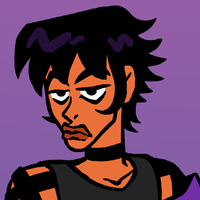
Mario and Ren started off on pretty rough terms which caused her to be wary of him for a while. On the other side, Mario felt extremely bad about it and did everything he could to make her realize she’s safe and can trust him. Eventually, she came around and they’ve been really close ever since; he was the first person she ever felt calm with and he helped her a lot when it came to basically learning how to socialize, despite him being a total extrovert and her a total introvert.
Mario is an only child who always wanted a younger sibling, so meeting Ren filled that void for him and he protects and spoils her like a little sister, he’s willing to listen to her talk about her interests even if he doesn’t get it, he takes her out shopping, plays basketball with her, etc.
Ren is very aware of this and deeply appreciates Mario for it. He’s constantly supportive of her, and while Ren is the kind of inexpressive and quiet person that might come across ungrateful to an outsider, Mario knows better than that and knows that this means a lot to her.
Anonymous said:
On a scale of 1 to 10, how huggable are each of your characters?
Ciril: Not huggable - bony and thin, will greatly oppose to hugs. Em: Somewhat huggable - might oppose at first, but it’s very possible for his motherly instincts to kick in and a gentle hug will be returned. Mario: Huggable - but your bones will be crushed Otto: Possibly huggable? Might not know what’s going on. Alternatively, he might think you’re upset and try to awkwardly pat your back. Ren: Not huggable, will flinch. Barbi: Only huggable for friends, otherwise she will headbutt you in the face Vivid: Extremely huggable. Possibly the most huggable. Will always hug back. King: Not huggable. Will not like it. Ness: Huggable. Will be happy to receive a hug and might spin you around.
Anonymous said:
Did Jojo inspire your characters designs? If so, are there any specific characters who inspired the designs? And on the topic of design, who is your favorite and why?
Araki’s work influenced me in general, not just when it comes to character designs, it basically changed how I look at art altogether. A lot of the characters are directly inspired by stylistic choices, rather than specific characters;
- Crop tops. - While Em was not inspired by Kakyoin directly, he was inspired by how I decided to stylize Kakyoin when I drew him. - Barbi’s hair is inspired by Araki’s rigid style of drawing hair which I love a lot - King’s hair was inspired by Diavolo’s hair, because I interpreted Diavolo’s hair as having a leopard pattern, and that gave me idea for King’s zebra pattern - Similar as with Em, this isn’t a DIRECT inspiration from JoJo, but the way I draw Mario is slightly based on the way I stylized DIO - Ciril’s two-tone hair was inspired by my initial interpretation of Abbacchio’s headband being differently coloured hair on top of his head. - Ren’s pitch black no-shine eyes were inspired by Mista, and her spiky hair is a mixture of Narancia and that 2000s scene style where everyone gelled the hair at the back of their head - The ‘holes’ between the strands of Ness’ hair were inspired by how Reimi’s hair was drawn, I thought that was really cool.
As for my favourite, I’m fond of all of them since I worked on streamlining their designs a lot, but if I had to pick, I think King is generally the one I like drawing the most for some reason. I’m very happy with how Inverness turned out too, and Em being kind of a fashionista is fun to design outfits for.
Anonymous said:
Do any of your OCs watch anime? If so what type?

Ren is a bonafide weeb. Kuroshitsuji is her favourite anime because she loves Sebastian. Her favourite genres are supernatural mystery anime and slice-of-life anime. She prefers older shows and doesn’t really dig the hype of the seasonal shows, though she will occasionally check them out. She generally doesn’t like the Shounen genre. She likes Dragon Maid too, Fafnir being her favourite (as you can see she has a type). She uses Picrew to make her avatars.
Anonymous said:
Who of your OCs is the least athletic? Who's the most athletic?

Due to his current predicament, Ciril is by far the least athletic one, as sometimes he can barely walk. Before the curse, however, he was a traveller, meaning he was in a pretty good condition.
If we don’t count Ciril due to his curse, then Em would be the least athletic one. He’s slim and elegant and makes sure to stay that way, but any work out he does isn’t really preparing him for any serious conditions, he’ll be the first to lose breath if everyone ran a race (not counting Ciril who, frankly, can’t run.)
On the other side, Otto doesn’t look like it and doesn’t live like it, but he’s pretty much peak condition among my characters. He actively works out as a way to cope with the mess that is his life and had military training in the past.

(Mario is also a good competitor for this, being a fitness bro, but he doesn’t have nearly as much experience as Otto, and despite their difference in size, Otto could absolutely take him down.)
Anonymous said:
ideas on how any of your original characters would deal with self isolation/quarantine?
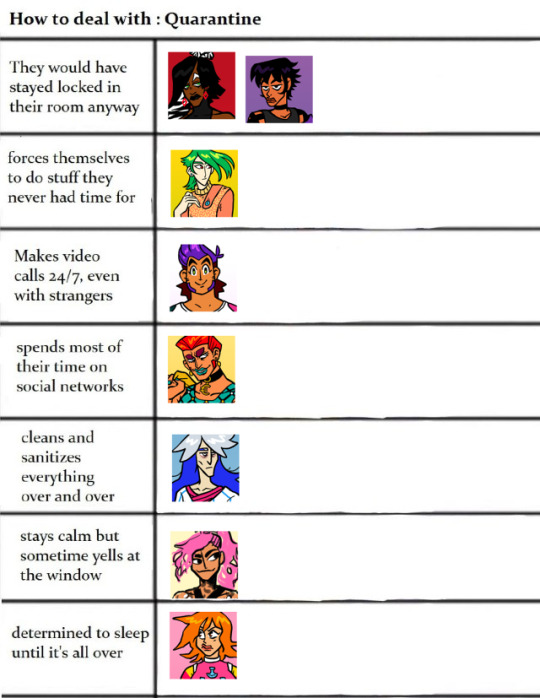
59 notes
·
View notes
Text
Okay, Enough With The Live Action/CGI Hybrids - Quill’s Scribbles
So the trailer for the upcoming Sonic The Hedgehog movie came out...

Do I really need to say it? Everyone and their mums have already said it. Hell, you’re probably saying it right now.
Sigh. Okay. Fuck it. I’ll say it.
Who the fuck thought this was a good idea?!?!
The trailer itself is shockingly bad. It looks bland and generic with almost nothing in common with the games. The jokes are forced and painfully unfunny (why are the people in the airport more concerned that the ‘child’ in the bag isn’t James Marsden’s rather than that there’s a fucking child in the bag in the first place?!), Jim Carrey is being his usual obnoxious self and is plain and simply a terrible choice for Doctor Eggman (isn’t the whole point of Doctor Eggman that he’s supposed to, you know, look like an egg?), and the soundtrack is utterly cringeworthy (Gangsta’s Paradise? Really?!?!). But that all pales in comparison to by far and away the biggest problem with the trailer. And I think you can all guess what that is.
Yes I’m of course referring to the noticeable absence of Team Chaotix. An artistic decision so despicable, it’s practically a hate crime. For shame! Everyone knows that Charmy Bee is the best character in the franchise and yet they don’t have the guts to put him in the movie! Fucking philistines!
...
Oh yeah, and Sonic the Hedgehog looks like a monstrous abomination concocted from the fever dreams of Doctor Frankenstein and Walt Disney.
It’s hard to know where to start when talking about just how grotesque and disgusting this CGI Sonic is. He looks like what your computer would produce if it caught pneumonia. What I especially don’t understand is why they veered away so heavily from the original, iconic design. I mean...

I don’t know about you, but I’d honestly have no problem if the movie just kept this look from the games. Hell, I think even giving him realistic fur would be pushing it. This is perfectly fine. I could totally see this design working in a movie. Instead we get the secret love child of Gollum and Papa Smurf.
He just looks so weird with human proportions. The leg muscles, the two eyes, the human looking teeth. Apparently the filmmakers wanted this Sonic to look as realistic as possible. Because when I pay to see a movie about an anthropomorphic blue hedgehog that can run at supersonic speeds, that’s my first thought. ‘Is it realistic?’
... Jesus Christ.
But of course the main problem with this live action Sonic movie is that it exists in the first place. When it was first announced, I assumed in my naivety that it would be an animated movie. Because that would make sense, right? There have been movie and TV adaptations before and they were all animated. Imagine a big budget computer animated Sonic movie. That would be really cool. But it was not to be. In Hollywood’s infinite wisdom, they decided to go the live action route because... Actually why did they choose to go the live action route? Well that’s what I hope to address in this very Scribble.
Live action adaptations and remakes are nothing new of course. Disney had tried it a few times in the past with movies like 101 Dalmations, there have been other live action versions of animated or illustrated characters such as the Grinch and the Cat In The Hat, Garfield, the Smurfs and Alvin and the Chipmunks, and there was of course the infamous Super Mario Bros movie, which answered the question of what it would be like if the Mushroom Kingdom took place in the same universe as Judge Dredd. But this is the first time live action/CGI hybrids have been huge money spinners. Disney struck gold back in 2010 when Tim Burton’s version of Alice In Wonderland made a billion dollars at the box office and now the company is mining through their back catalogue of Disney classics and giving all their movies the live action treatment. Initially I was okay with this because in the case of Alice In Wonderland and Maleficent they were at least trying to reinterpret the original films and put a new spin on them, but now they just seem to be copying the movies verbatim. Making live action remakes just for the sake of making live action remakes.
Now other studios are trying their hand at, the most notable being Pokemon: Detective Pikachu. Here’s a picture of the original Pikachu:

Cute, right?
Now here’s a picture of the live action Pikachu:
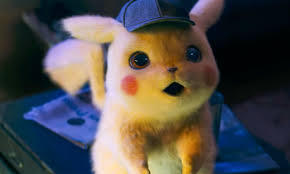
Can you see the problem here?
(also why the hell is Ryan Reynolds the voice of Pikachu? I honestly can’t think of anyone more inappropriate for the role. It’s like casting Samuel L. Jackson as a Powerpuff Girl)
The fact of the matter is some things just don’t work in live action. Sonic the Hedgehog and Pokemon work in their respective universes because they’re animated creatures in an animated world, and their anatomy and design fit that world. In the real world, it just doesn’t work. Pikachu looks strange and kind of creepy in the real world. The same is true of the other Pokemon. Jigglypuff looks utterly adorable in the games and animated show with its spherical body and cartoon eyes and you just want to take one to bed with you and cuddle them like a teddy bear, but in the real world it looks fucking scary!
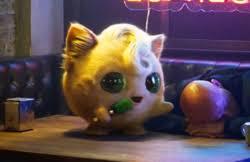
I wouldn’t want to cuddle that thing! It looks like it would go for my throat given the opportunity!
The same is true of Sonic. Paramount’s attempts to make him look more ‘realistic’ just makes him look incredibly alien and out of place.
Another example I like to bring up is the film Christopher Robin. Now we all know Winnie the Pooh. Silly ol’ bear. Charming, cuddly and endearing, right? Just look at him.
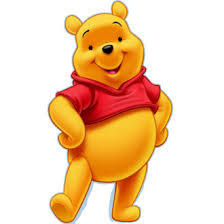
How can you not fall in love with him?
Now here’s the live action version:

When I first saw the trailer, I was utterly creeped out. He looks like something out of a horror movie. Add to that that they got the original voice actor from the Disney cartoons to reprise the role, and Winnie the Pooh pretty much became the source of all my nightmares for the next couple of weeks. That lovable voice should not be coming out of that... thing.
It’s a pattern that repeats itself over and over again. Look:
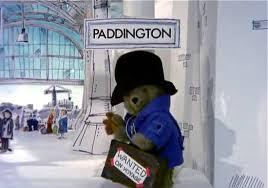
Charming and lovable.

Weird and unsettling.
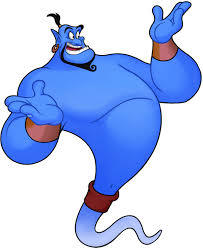
Creative and fun.
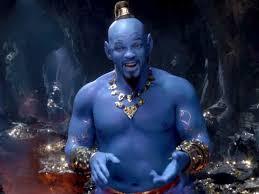
Photoshop disaster.
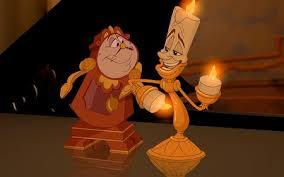
Sweet and likeable.
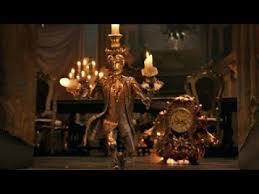
Fetch my crucifix and holy water.

Emotional and expressive.

So ‘realistic’ to the point where he looks like he has the emotional range of a teaspoon.
Now I recognise this largely comes down to subjective opinion. If you like these CGI redesigns, that’s great. More power to you. But I know for a fact I’m not the only one getting increasingly weirded out by these computer generated demons from Hell.
So why does Hollywood keep making these films. Well obviously in the case of Disney it’s because they’ve ran out of original ideas and want to make a quick buck by exploiting their audience’s nostalgia. (the same can be said of the Star Wars sequel trilogy). But what about other studios? Yes they’re financially motivated too, but there’s got to be more to it than that.
I think it’s largely down to the stigma of animated movies. Animation has become synonymous with children. When you hear the term ‘animated movie’, you automatically associate it with ‘kid’s film’. And ‘kid’s film’ is often used in a negative context. Like it’s somehow lesser than quote/unquote ‘proper’ movies. Live action suggests a certain pedigree. A sense of prestige. But that’s obviously bollocks. The quality of a film isn’t dictated by whether it’s live action or animated. It’s determined by the writing, directing and acting. There have been live action films made for kids and animated films made for adults. And I’m not talking about Sausage Party. I’m talking about Finding Nemo.
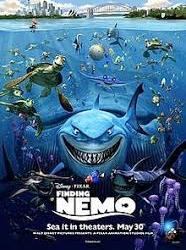
Now I know what you’re thinking. Finding Nemo? Isn’t that a kid’s film? No. It’s a family film. And that right there is the problem. You heard me say Finding Nemo, an animated film about talking fish, and you automatically associated it with a kids film. But the thing is Finding Nemo deals with some very dark and adult themes and its moral message of not being overprotective and allowing children to take risks is intended for the parents, not the kids. Obviously kids can still watch and enjoy Finding Nemo, but it’s the parents who are clearly the target here. The same is true of Toy Story 3. Children can still watch and enjoy it, but the film is clearly intended for people who watched the original Toy Story when they were a kid and are now grown up. When you stop and think about it, it’s really sad that family movies are associated with kids movies. Not that there’s anything wrong with kids movies obviously. But why do people assume that family movies are meant for kids? Why can’t they be adult stories that are also accessible to children? Books have done it. The Artemis Fowl series is kid friendly, but its tone, themes and style suggest the author has an older and more sophisticated target audience in mind. A Series Of Unfortunate Events is popular with kids, but it’s adults that get the full experience because of the way Lemony Snicket uses postmodern and meta-textual elements in the books, which would sail clean over the head of a kid reading it. The idea that a live action remake is somehow more ‘grown-up’ than an animated movie is just absurd. The original Lion King was very grown up, thank you very much. There are lots of bright colours and fun songs for the kids, but it also doesn’t sugarcoat the darker themes such as death, betrayal, corruption and abuse of power. Mufaser’s death isn’t going to be made any more impactful in live action. The animated version was more than heartbreaking.
Shifting the conversation back to Sonic, this is also intrinsically linked with another problem with Hollywood at the moment. Movie adaptations of video games. And again, it’s a similar problem. People, especially critics, view video games as being lesser than movies. Roger Ebert famously said that video games will never be considered art. But that’s nonsense. There have been loads of video games that could be and have been considered art. BioShock, for instance, which scrutinises and criticises both objectivism and capitalism. There’s the Mass Effect trilogy, which is often described as this generation’s Star Wars. The Last Of Us is widely considered to be a masterpiece by gamers and literacy scholars alike. Hell, the fact that Hollywood wants to make movie adaptations of video games at all suggests that games do in fact have some inherent artistic value after all. And it’s not as if I’m wholly against making movies based on video games. There are some games that could translate really well to films, Sonic being one of them. (I personally loved the Ratchet & Clank movie, for example. It’s just a shame nobody else fucking watched it due to the almost non-existent marketing). However there’s an inherent problem with translating video games to movies as opposed to, say, translating books to movies. In book to movies adaptations, studios are adding something. Visuals, sound, performance, etc. In video game to movie adaptations, they have to take things away. The most obvious is interactivity. Unlike movies where nothing is required of the audience other than to just dumbly stare at the screen, video games require the audience to actively control the story. Move the character, kill baddies, solve problems and stay alive. You are an active participant in the narrative. As a result, the emotional connection you feel with both the plot and the characters is often stronger than that in a movie because you have direct influence over what happens.
Also video games have the luxury of being able to tell their stories over the course of eight to thirty to even a hundred hours of gameplay. There’s no way you could condense something like The Last Of Us down to a two and a half hour movie. There would just be too much lost. Important character moments and plot points that would have to be chucked in the bin. Yes things get lost in book to movie adaptations, but nowhere near at the scale of a game to movie adaptation. A possible workaround would be to make game to TV adaptations instead, but then we’re back to the interactivity problem again. And don’t get me wrong, I’m not saying that movies are better than books or that video games are better than movies. I’m just saying they’re each individually suited to tell their own kinds of stories in their own unique ways, therefore translating from one medium to the other is often difficult. The Last Of Us would never make a good movie, and that’s okay. The game is still amazing and the story is still amazing. Its artistic merit isn’t lessened because it can’t be translated to films, in the same way the merits of a bike aren’t lessened because it can’t fly. It’s just not designed to do that.
I guess the point I’m making is there’s no one way to tell a good story. There are an infinite number of ways it can be done. So lets stop Hollywood’s obsession with pigeonholing everything into one format and actually explore the possibilities, shall we?
#sonic the hedgehog#sonic the hedgehog movie#live action cgi remakes#video game movie adaptations#quill's scribbles
21 notes
·
View notes
Note
6, 10, and 12 for ENY, thank you in advance.
6: What makes this fic special or different from all your other fics?10: Why did you choose this pairing for this particular story?12: What do you like least about this fic?
I was answering this, and Tumblr reloaded, deleted my original answers, and now I’m like half-dead from writing so much and losing it. (I especially lost prime answers for the first question.) Lemme try recapturing stuff.
Going right for the juicy stuff, eh? Ok, let’s see what we’ve got!
6) Its length, lmao. That’s just a joke, but it really is the longest I’ve written.
I think a lot of what makes it unique is it’s kind of an all-encompassing type of story, where it hits a lot of canon material, but presents less explored concepts, and it just delivers it how I like and wanted it to.
So far, I haven’t really written a hero/villain romance that hits the same notes that this one does, and I’ll explore that a little more below with the next question. But, like, the balance struggle for heroics and villainy, the morality between not just the protagonists but the entire cast, that helps drive it so well. And it just captures everyone’s involvement so nicely.
It also relies on a lot of the history that I’ve studied and gained from playing and learning about the Super Mario franchise at large, and it feels as though it hits a lot of series. Fanfics generally pick at canon material that they can utilize and bend around to their will, but what I like doing with ENY is actually rearranging so many ideas into a new scope for them.
Even small things that don’t feel noteworthy can fall into line for this. Sports and spin-offs that I would ordinarily hand-wave as major involvement for the series became a neat background that I explored and exploited not only for Bowser and Mario’s relationship, but Daisy’s general involvement for things. Random encounters from games like Super Mario RPG that involved a super rare and mostly forgettable species (Shamans) ended up getting a huge role increase because of how nicely their utility weaved into the fanfic’s story, what with their special magic powers, the few characters that they seemed to have sired for later spin-offs, and this general mysterious exotic flavor that they can add in.
Those are just a couple of points that I touched on, but like, this kind of story allows that depth and exploration for the franchise at a greater scope. It goes from even the earliest days of the franchise (yes, even touching back to Donkey Kong) all the way to more recent installments (Galaxy games, and very recently Odyssey), while still picking up around the history of the series along the way.
And I don’t think any of my other fanfics capture that same kind of scope, or show that presentation nearly as well. Most stuff that I’ve written kind of goes around ideas, “What-If” scenarios that play out, and don’t have a huge amount to go over. Some are just answers to ideas that people shared on Tumblr, little scribbles that play with similar concepts.
The biggest counterpart fanfic series, my Pokémon stories, also don’t take the same routes to explore the franchise. Whereas my Mario fanfic relies on its history and canon to get involved with everything, my Pokémon fanfics take elements from the series and morph it into something else. That’s not a mistake or a shortcoming at all; it’s just the two different ways that I wanted to write the stories for each franchise.
Finally, I forgot to even mention this last time, but the reader responses are also a huge part of writing for me, and I love the energy, the excitement that people get from this story. And that just really keeps me into it, and I want to keep interacting with people with the story itself. That makes it so fulfilling.
The rest will be below the cut!
10) Years and years ago (I hate that I can use that now, lmao), I used to read a multitude of fanfics, but never had an account. Bowser/Mario stuff was part of it, nothing that I recall very well anymore, but it was part of the collection of things that I had read.
I just remember that none of it reached 10 chapters, nothing delved deep into it, and I was like, “Come on, give me more! This a combination to explore!” But this pairing was so rare compared to the more mainstream (and hetero) counterparts, so it wasn’t an idea a lot of people played with, or were considered weird for doing so, I’d wager.
And yet, hero/villain pairings were something that people really enjoyed around the Internet and in fandoms. I think what tipped me into favor with it was that there were official explorations of dynamics between Batman and the Joker, and professional writers took to exploring Joker’s character as someone that was romantically invested in Batman, obviously to the point of obsession, but like, genuinely into him.
So, couple that, with me being like, “But we can do more!” and a bubbling interest in fanfics, to the breaking point where I end up going, “Fine, I’ll do it!” And then I made my account, and tossed up a story where Bowser confesses an interest in Mario, explores a load of things that work in favor of their pairing, tackles everything going against them, and had him go, “Screw all of that, I still want you anyway.”
Then one of my readers went, “Hey, what’s Mario’s reaction to that?” And then I wrote up the counterpart for that. More people were like, “Hey, that’s cool, can we get more?” So, I wrote up the story launching off from there.
Their dynamic is fun to explore, because they seem like a good fit for each other. Even Bowser’s desires of conquest can be twisted in favor of a potential relationship for the two. And it’s great, because you can really, really hit all of the fallout notes not just between the two of them, but their people and world around them. The reactions just keep going, and the longer it takes to finally hit them, the bigger the blowouts can be, or they can be a lot different when you stop to think about them. Because Mario and Bowser are definitely connected deeply to the entire Mushroom Kingdom, so it’s not just a small thing, and it’s not something that people can expect to just happen. That makes it so exciting to follow the two of them.
Also, I discovered that I have a soft spot for Knight/Royal romances. I didn’t realize it at first, and now it’s just kind of a thing I fall into a lot.
12) You know, I don’t know, because I kind of like a lot of it, really. If I had to really pick something, it would end up based off of reception, not really based on what I wrote.
And honestly, I think even then, I still liked what I’ve written so far for the story. If I go back and carefully re-read every little bit, I’ll probably find stuff that’s weak, stuff that’s dated, and other sour notes.
But that means I have to scavenge for it, and off the top of my head, I can’t think of anything that I really don’t like about ENY. It’s kind of been my genuine pleasure to write the story, and I’ve enjoyed all of it.
Maybe that’s a bit of a cop-out? It’s really how I feel though. Even stuff that bubbles to mind now, where I’m like, “Oh wait, that chapter wasn’t great,” or “Oh, people didn’t quite take to that,” that still includes stuff that I enjoyed myself, so I can’t honestly admit to regretting it.
4 notes
·
View notes
Note
umm for the video game thing 4, 5, 10, 22, aaaaand 27 (tho is making you answer 1-30 overkill? XD)
purple going in for the 30 player kill streak
I kid, but i can do them all as i chill in the market
1: Do you try to stay away from walkthroughs?If im first starting a game yea, but after i beat it and want to get things i havent unlocked or want more insight to a game before i buy it i’ll end up watching them.
2: Company you're always loyal to?SQUARE ENIX...every time i find a game that looks cool/want to buy, i watch the trailer and SE appears. i just..sigh and accept it
3: Best game you've ever played?thats hard to choose...either Drakengard 3 though the Infamous series is so good
4: Worst game you've ever played?Overwatch cant say ive played a bad game? i always buy games i know i like.
5: A popular series/game you just can't get into no matter how much you try?idk about trying but i just dont like the mario games..like at all.
6: A game that's changed you the most?hmmm probably NITW
7: A game you'll never forget?Drakengard 3..game wrecked me and after 4yrs..still cant beat branch D
8: Best soundtrack?how dare, one does not simply pick one ost..at first i was gonna say Drakengard 3 - Final Song BUT then i remembered Nier Automata’s - Amusement Park. there were so many variations on it done in the game, just all around beautiful. All of Nier just has the music that sends chills like Simone’s battle ‘A Beautiful Song’ had goosebumps everywhere it was great.
9: A game you turn your volume off every time you play it?whats the point of the game then?? lol ive never done that actually
10: A game you've completely given up on?Lux-Pain...that boss fight..its been 10yrs now? also assassins creed
11: Hardest game you've played?no game is hard to play unless you hate yourself enough to do the hardest game settings Castlevania: LoS..like any setting thats higher then normal is just batshit insane b/c the damage you get..lowkey traumatized by dod3 branch d though
12: Shortest time you've beaten a game in?4 days? i wanna say. cant remember the game though
13: A game you were the most excited for when it wasn't released yet?you mean a game that says its gonna be released but keeps being pushed back? Kingdom Hearts 3 The Last Guardian, it was worth the wait!
14: A game you think would be cool if it had voice acting?oooh...umm...Okami! its hard to think of a silent game now days lol. I know they made like lil noises when they talked or had..weird jumbled voices? but it wouldve been cool if they had normal voices.
15: Which two games do you think would make an awesome crossover?Animal Crossing and Pokemon! Like imagine having pokemon as villagers instead..that would be soooo cool.
16: Character you've hated most? From what game?Honestly? i hate Kairi in KH with a passion.
17: What game do you never tell people you play?the anime games lmao
18: A game you wish your friends knew about?drakengard..like more people know the spin-off nier, then the original, its like..why..
19: Which game do you think deserves a revival?I HEARD A RUMOR ABOUT OLD SPYRO GAME REVIVAL AND I HOPE ITS REAL
20: What was the first video game you ever played?i was playing sonic vs mario at the olympics on a psp lol. (i know thinking back on it now its weird but i know what it was i played on..maybe he hacked it? reasons why i got a psp. i doubt he remembers though b/c its been like 10yrs or so) then my other uncle got me into pokemon.
21: How old were you when you first played a video game?hmm...maybe 8? i just know i was in 3rd grade
22: If you could immerse yourself in any game for one day, which game would it be? What would you do?uhhh..hellblade. i played it all day once already but i still want to explore/admire
23: Biggest disappointment you've had in gaming?GOD...trying to summon a certain demon but end up getting a freak literally accident which ends up being the dick in the chariot no one likes, Mara...
24: Casual, Hardcore, or in the middle?like as a gamer in general or a battle preferences? id say in the middle
25: Be honest; have you ever used cheats (like ActionReplay or Gameshark)?guiiillty~ lol
26: Handheld or console?hard choice..but as of late no good games for handheld, so console for sure.
27: Has there ever been a moment that has made you cry?SQUARE ENIX MAKES ME CRY ALL THE TIME
28: Which character's clothes do you wish you owned the most?oooh..dang umm..like any character from anywhere? hm..cant say i want any o: though i do want those sick bio tattoos on demi fiend lol
29: Which is more important, gameplay or story?story, i cant express that enough. I just finished Hellblade, and that is a heavy story based game (amazing as fuck and im down to broadcast/shareplay it) and doesnt really focus on fighting at all, like its just basic fighting and the most satisfying counter attack, nothing sepcial.
30: A game that hasn't been localized in your country that you think should be localized?that kproject dating one b/c im trash
2 notes
·
View notes
Text
Sri Lanka Diary, Part 1/4
London to Kandy to Nuwara Eliya
It’s early on a rainy Thursday afternoon in January when I leave Oxford. Even under grey skies it still looks beautiful but I’m glad to getaway all the same. As per tradition, my January is fairly empty work-wise — the musician’s quiet month — so Harry ‘Deaco’ Deacon (bass player with Razorlight and Willie J Healey, among numerous others) and myself are heading east to Sri Lanka!
Two weeks of freedom in ‘The Land Of Serendipity’ is a tasty prospect – even without mention of the food. So to Heathrow I go, where a Thai waiter called ‘Servinio’ serves up my final taste of England - a passable fish pie - at The Curator before I board Sri Lankan Airways flight UL504 and we soar up to 31,000 feet.
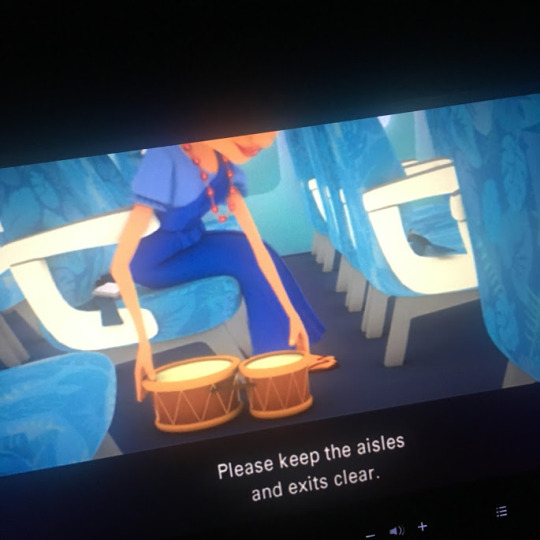
↑ For your own safety and comfort please stow your bongos securely
It only takes American Sniper (better than expected) and half of Django Unchained (I‘ll be back for the rest) before I pass out. Deep in slumber I remain for the duration of the 10-hour flight before waking to a tasty Sri Lankan fish breakfast and a rapid descent into Bandaranaike International Airport.
Inside the airport it’s clinical and clean and the staff all wear white – though ominously a solitary Pizza Hut greets us before even reaching Passport Control… hopefully not a sign of things to come.
It’s early on a sunny Friday afternoon as I emerge from the terminal, dazed and disoriented, into the frenzied bustle and hustle of a Sri Lankan street. A hundred tuk-tuk drivers spy my pale skin and circle like vultures... airports are heady hunting ground for grifters the world over and it takes a feat of negotiating to convince a rickshaw driver to take me to the nearby bus station for less than the cost of my return flights...

Deaco has been out here for a few days already and has journeyed as far as Kandy, a small city in the middle of the island. It’s a four-hour passage to get there by bus and we meander along at a fair pace, slowly picking up elevation as the journey progresses. I’m a little weary but it’s an enjoyable ride – and very cheap too at 162 rupees (70p)!
There’s barely a junction or a turning to be made on the route east, just a long winding road up into the mountains, flanked by huts, houses, schools and shops. As they say in Asia: Same same but different. And despite being on another continent, many of the characters on the bus are familiar: a group of young mums gossip, school kids play, and my new friend and seat-mate Hashan, on his way to visit an Aunt, promptly falls asleep in my armpit.
The bus pulls in at Kandy station and Hashan peels himself from my underarm. I disembark and hop in a final tuk-tuk up to the pre-emptively named ‘Best Hostel’ where Deaco awaits. It’s his Birthday today! Many Happy Returns to the chap, and after a joyous reunion, we enjoy a celebratory dosa in town with a third travelling companion, Tom, from St Louis, MI.
Kandy is a vibrant little city popular with tourists and centred around a man-made lake. There’s a wiggly road that skirts its perimeter and I can’t help but think it would make for a great tuk-tuk Grand Prix – or at the very least a Kandy Lake track level on Mario Kart.

Harry takes me to see all the tourist attractions – which is kind, given he’d already been to see them before I arrived. We start at the Botanical Garden, a scenic spot with an impressive suspension bridge and a beautiful display of different grasses (who knew there were so many). We bump into old friends of his too: an odd pair of Russians with whom he shared a hostel earlier in his trip. The tourist trail is a well-trodden one and bumping into familiar faces hundreds of miles down the road is a common occurrence ... I suspect it isn’t the last time we’ll see them.
Next we enjoy a display of ‘Kandy Kultural Dancing’ (plate-spinning, back-flipping, fire-walking and some enthusiastic drumming) before heading over to The Temple of The Tooth, the centrepiece of the city and one of the biggest attractions in Sri Lanka.

As the name suggests, the focal point of the large Buddhist temple complex is a single tooth mounted atop a magnificent gold shrine. And not just any tooth! Indeed, the famous fang is allegedly one of the Buddha’s very own, pulled from the funeral pyre of his body back in 543 BC. It has a chequered history and the controversial canine has already been responsible for more than one war...
We barely catch a glimpse of the shrine, let alone the tooth itself, which as it turns out is safely tucked away inside a box within a box within a box within a box within a box within a box within a box. Only a handful of people have ever seen the holy fragment which leads one to wonder whether the tooth is literal or simply more a state of mind...

Tooth or no tooth, there’s a lively atmosphere in and around the Temple as night falls, while tourist and Buddhist alike are harmoniously integrated in a melange of worship, ceremony, prayers and music.
Feeling a little more spiritual, we rise early the following day and head to Kandy station for the 0847 train to Nuwara Eliya. It’s another small city further south in the hill country of the Central Province. The scenic journey that will take us there is apparently the stuff o’ legend and needless to say we aren’t the only ones with the idea. The platform at Kandy station is soon teeming with tourists – including a pair of familiar Russians!
First Class has long since been reserved by the coffin-dodgers on the package tours, so it’s a tight squeeze in the Second Class compartment. Not concerned with seats, we locate ourselves by an open door for the duration and take it in turns with our fellow travelling companions (the usual suspects – Aussies, Germans and more Russians) to hang out the side, take pictures and wave at those who call this beautiful land their own.

↑ Third Class can be found at the rear of the train, attached by rope
The train canters along at a pleasant pace, weaving in and out of tea plantations while the native folk enjoy their peaceful Sunday in the beautiful Sri Lankan hill territories. With much more rain up here, the scene is more colourful than the sandy beige of the lowlands, with plants, trees, grasses, shrubbery and foliage in every shade of green. Many of the quaint little stations (my favourite is called Ohiya) along the way have a distinctly English feel, reminding me with fondness of the Malton-Scarborough route oft ridden in my youth.

After 4 idyllic hours watching the country scroll by and chatting with new friends, we disembark at Nanuoya Station and our friendly cab driver Pryantha (+94 778 880213) takes Harry, myself and a handful of Aussies into Nuwara Eliya to drop us at our respective hotels.
At least that’s the plan, except Pryantha nor anyone else that he asks has actually heard of the ‘King’s Lodge’ and when we eventually arrive at the hotel in the picture the staff there don’t recognise the name either.
All the same, it’s such a pleasant spot overlooking the town that we decide to stay anyway. They show us to their last remaining room, a ‘triple’ which one presumes would surely contain at least two beds given that a triple bed doesn’t exist. In Sri Lanka however, it does, and it looks like tonight Harry and I will be sharing a bed, albeit a large one. (It’s good to know that the liberal Sri Lankans consider a three-way relationship quite normal and are prepared to cater to that in the design and manufacture of both beds and bedding.)

We wander into town for a bite, passing a sign for Grymsby Holiday Bungalow. As a Mariner myself, it’s nice to feel close to home – despite the misspelling – and a passing stranger poses with me for a photo, insisting that it was his Uncle who named the hotel and that it really is named after “Grymsby City in Engerland”.
We’re rapidly becoming fans of the cheap local eateries where the food is always fast and fresh (and there are lots of vegetarian options too). In Nuwara Eliya town we spy a vibrant spot teaming with locals and lay out a mean £1.70 on a dinner of vegetable kotu, egg rotis and dhal curry.

Nuwara Eliya isn’t called Little England for no reason. That night an almighty rain unleashes an unrelenting torrent that bounces off the roof and fills our room with a resonant 80dB of white noise. It’s not until daybreak that the downpour ceases – apparently this happens most nights – and I grab 6 minutes of uninterrupted sleep before heading down to breakfast.
We’re taking a tour of the surrounding area before training down to Ella later in the afternoon and our friendly hosts have hooked us up with their friend Hamza to show us the sights.
He rolls up bright and early in his well-kept rickshaw complete with rain flaps, CD player and anti-marijuana stickers. He’s the happy-go-lucky sort, with enough spoken English to get by and a friendly demeanor. It’s only when he smiles his generous smile that I first glimpse the most rum set of gnashers I’ve ever seen. There’s a section of ill-fitting false teeth, a couple held together with string, and some that barely look like teeth at all. If the Buddha’s canine was anything on Hamza’s I can see why they keep it locked up inside seven boxes.

First stop: Ramboda Falls. The journey alone is a thrill: an endless vista of tea plantations as far as the eye can see. These hill territories are carpeted with them and it’s easy to see why, after the overnight downpour.
Our rickshaw winds its way along the mountainside on a road peppered with pretty stalls selling fresh vegetables: aubergine, potatoes, curry leaves, onions, green chillies, carrots and unexpectedly to me, leeks, which it turns out are a delicious feature in many Sri Lankan dishes.
We swing a final right in a sharp descent and are suddenly confronted by 109 metres of sheer waterfall, a magnificent sight, and in fine thundering voice after the long nights rainfall.

Ramboda Falls holds the claim of being the 729th highest waterfall in the world, a fact which massively undersells what is actually an impressive spectacle. There’s a dangerous and slippery path which snakes up the rocky mountain face, and Hamza insists that it’s well worth climbing for a closer view of the natural wonder. Thankfully I had my Loake brogues only recently re-soled...

While our nature-loving guide takes a moment to scrawl our initials into a tree, an elderly native appears in the undergrowth. The water supply to her village some 5kms away unexpectedly stopped, so she traced the pipe halfway up the mountain to the spot where it was broken and is undertaking a repair job.

The descent is even more deadly, made all the more tricky when two Chinese schoolgirls wearing flip flops execute a reckless overtake and I almost lose my footing. Luckily I needed no dramatic rescue because Hamza’s attention was entirely on Harry. “I like your hair” I overhear him say to my friend. “You look like Robin Hood...”
The next stop on our tour of the Nuwara Eliya district is the Blue Field Tea ‘Factory’. It was opened in 1921 and has changed very little since. Everything is still done by hand and much of the machinery originates from Lincolnshire, Birmingham and Belfast. It’s atmospheric and rich in Colonial, vibes which I love!

Our tuk-tuk swings into the ‘Damro’ factory next but we’re done tea-tasting and ready for something a little more substantial, so Hamza takes us to his favourite buffet. The food is delicious, however, our respective understandings of the term ‘buffet’ are quite different. After sampling a little of everything on display (dhal, different kinds of rice, mackerel, swordfish, curried aubergine, egg curries, sweet and sour vegetables) it’s to our dismay that we’re charged the full price of a meal for every dish! Thankfully the food is so cheap that it doesn’t amount to much.

Finally we’re dropped off at the train station. It’s been a fine day in the company of our friendly tour guide and his willingness to shuttle us around from place to place without constantly asking us for more money is refreshing. Your teeth may be among the worst I’ve ever seen, Hamza, but we’ll miss you.
Part 2/4 follows shortly!
Mike
0 notes
Text
The Shareware Scene, Part 5: Narratives of DOOM
Let me begin today by restating the obvious: DOOM was very, very popular, probably the most popular computer game to date.
That “probably” has to stand there because DOOM‘s unusual distribution model makes quantifying its popularity frustratingly difficult. It’s been estimated that id sold 2 to 3 million copies of the shareware episodes of the original DOOM. The boxed-retail-only DOOM II may have sold a similar quantity; it reportedly became the third best-selling boxed computer game of the 1990s. But these numbers, impressive as they are in their own right, leave out not only the ever-present reality of piracy but also the free episode of DOOM, which was packaged and distributed in such an unprecedented variety of ways all over the world. Players of it likely numbered well into the eight digits.
Yet if the precise numbers associated with the game’s success are slippery, the cultural impact of the game is easier to get a grip on. The release of DOOM marks the biggest single sea change in the history of computer gaming. It didn’t change gaming instantly, mind you — a contemporaneous observer could be forgiven for assuming it was still largely business as usual a year or even two years after DOOM‘s release — but it did change it forever.
I should admit here and now that I’m not entirely comfortable with the changes DOOM brought to gaming. In fact, for a long time, when I was asked when I thought I might bring this historical project to a conclusion, I pointed to the arrival of DOOM as perhaps the most logical place to hang it up. I trust that most of you will be pleased to hear that I no longer feel so inclined, but I do recognize that my feelings about DOOM are, at best, conflicted. I can’t help but see it as at least partially responsible for a certain coarsening in the culture of gaming that followed it. I can muster respect for the id boys’ accomplishment, but no love. Hopefully the former will be enough to give the game its due.
As the title of this article alludes, there are many possible narratives to spin about DOOM‘s impact. Sometimes the threads are contradictory — sometimes even self-contradictory. Nevertheless, let’s take this opportunity to follow a few of them to wherever they lead us as we wrap up this series on the shareware movement and the monster it spawned.
3D 4EVA!
The least controversial, most incontrovertible aspect of DOOM‘s impact is its influence on the technology of games. It was nothing less than the coming-out party for 3D graphics as a near-universal tool — this despite the fact that 3D graphics had been around in some genres, most notably vehicular simulations, almost as long as microcomputer games themselves had been around, and despite the fact that DOOM itself was far from a complete implementation of a 3D environment. (John Carmack wouldn’t get all the way to that goal until 1996’s Quake, the id boys’ anointed successor to DOOM.) As we’ve seen already, Blue Sky Productions’s Ultima Underworld actually offered the complete 3D implementation which DOOM lacked twenty months before the latter’s arrival.
But as I also noted earlier, Ultima Underworld was complex, a little esoteric, hard to come to terms with at first sight. DOOM, on the other hand, took what the id boys had started with Wolfenstein 3D, added just enough additional complexity to make it into a more satisfying game over the long haul, topped it off with superb level design that took full advantage of all the new affordances, and rammed it down the throat of the gaming mainstream with all the force of one of its coveted rocket launchers. The industry never looked back. By the end of the decade, it would be hard to find a big boxed game that didn’t use 3D graphics.
Many if not all of these applications of 3D were more than warranted: the simple fact is that 3D lets you do things in games that aren’t possible any other way. Other forms of graphics consist at bottom of fixed, discrete patterns of colored pixels. These patterns can be moved about the screen — think of the sprites in a classic 2D videogame, such as Nintendo’s Super Mario Bros. or id’s Commander Keen — but their forms cannot be altered with any great degree of flexibility. And this in turn limits the degree to which the world of a game can become an embodied, living place of emergent interactions; it does no good to simulate something in the world model if you can’t represent it on the player’s screen.
3D graphics, on the other hand, are stored not as pixels but as a sort of architectural plan of an imaginary 3D space, expressed in the language of mathematics. The computer then extrapolates from said plan to render the individual pixels on the fly in response to the player’s actions. In other words, the world and the representation of the world are stored as one in the computer’s memory. This means that things can happen there which no artist ever anticipated. 3D allowed game makers to move beyond hand-crafted fictions and set-piece puzzles to begin building virtual realities in earnest. Not for nothing did many people refer to DOOM-like games in the time before the term “first-person shooter” was invented as “virtual-reality games.”
Ironically, others showed more interest than the id boys themselves in probing the frontiers of formal possibility thus opened. While id continued to focus purely on ballistics and virtual violence in their extended series of Quake games after making DOOM, Looking Glass Technologies — the studio which had previously been known as Blue Sky Productions — worked many of the innovations of Ultima Underworld and DOOM alike into more complex virtual worlds in games like System Shock and Thief. Nevertheless, DOOM was the proof of concept, the game which demonstrated indubitably to everyone that 3D graphics could provide amazing experiences which weren’t possible any other way.
From the standpoint of the people making the games, 3D graphics had another massive advantage: they were also cheaper than the alternative. When DOOM first appeared in December of 1993, the industry was facing a budgetary catch-22 with no obvious solution. Hiring armies of artists to hand-paint every screen in a game was expensive; renting or building a sound stage, then hiring directors and camera people and dozens of actors to provide hours of full-motion-video footage was even more so. Players expected ever bigger, richer, longer games, which was intensely problematic when every single element in their worlds had to be drawn or filmed by hand. Sales were increasing at a steady clip by 1993, but they weren’t increasing quickly enough to offset the spiraling costs of production. Even major publishers like Sierra were beginning to post ugly losses on their bottom lines despite their increasing gross revenues.
3D graphics had the potential to fix all that, practically at a stroke. A 3D world is, almost by definition, a collection of interchangeable parts. Consider a simple item of furniture, like, say, a desk. In a 2D world, every desk must be laboriously hand-drawn by an artist in the same way that a traditional carpenter planes and joins the wood for such a thing in a workshop. But in a 3D world, the data constituting the basic form of “desk” can be inserted in a matter of seconds; desks can now make their way into games with the same alacrity with which they roll off of an IKEA production line. But you say that you don’t want every desk in your world to look exactly the same? Very well; it takes just a few keystrokes to change the color or wood grain or even the size of your desk, or to add or take away a drawer. We can arrive at endless individual implementations of “desk” from our Platonic ideal with surprising speed. Small wonder that, when the established industry was done marveling at DOOM‘s achievements in terms of gameplay, the thing they kept coming back to over and over was its astronomical profit margins. 3D graphics provided a way to make games make money again.
So, 3D offered worlds with vastly more emergent potential, made at a greatly reduced cost. There had to be a catch, right?
Alas, there was indeed. In many contexts, 3D graphics were right on the edge of what a typical computer could do at all in the mid-1990s, much less do with any sort of aesthetic appeal. Gamers would have to accept jagged edges, tearing textures, and a generalized visual crudity in 3D games for quite some time to come. A freeze-frame visual comparison with the games the industry had been making immediately before the 3D revolution did the new ones no favors: the games coming out of studios like Sierra and LucasArts had become genuinely beautiful by the early 1990s, thanks to those companies’ rooms full of dedicated pixel artists. It would take a considerable amount of time before 3D games would look anywhere near this nice. One can certainly argue that 3D was in some fairly fundamental sense necessary for the continuing evolution of game design, that this period of ugliness was one that the industry simply needed to plow through in order to emerge on the other side with a whole new universe of visual and emergent possibility to hand. Still, people mired in the middle of it could be forgiven for asking whether, from the evidence of screenshots alone, gaming technology wasn’t regressing rather than progressing.
But be that as it may, the 3D revolution ushered in by DOOM was here to stay. People would just have to get used to the visual crudity for the time being, and trust that eventually things would start to look better again.
Playing to the Base
There’s an eternal question in political and commercial marketing alike: do you play to the base, or do you try to reach out to a broader spectrum of people? The former may be safer, but raises the question of how many more followers you can collect from the same narrow slice of the population; the latter tempts you with the prospect of countless virgin souls waiting to embrace you, but is far riskier, with immense potential to backfire spectacularly if you don’t get the message and tone just right. This was the dichotomy confronting the boxed-games industry in the early 1990s.
By 1993, the conventional wisdom inside the industry had settled on the belief that outreach was the way forward. This dream of reaching a broader swath of people, of becoming as commonplace in living rooms as prime-time dramas and sitcoms, was inextricably bound up with the technology of CD-ROM, what with its potential to put footage of real human actors into games alongside spoken dialog and orchestral soundtracks. “What we think of today as a computer or a videogame system,” wrote Ken Williams of Sierra that year, “will someday assume a much broader role in our homes. I foresee a day when there is one home-entertainment device which combines the functions of a CD-audio player, VCR, videogame system, and computer.”
And then along came DOOM with its stereotypically adolescent-male orientation, along with sales numbers that threatened to turn the conventional wisdom about how well the industry could continue to feed off the same old demographic on its head. About six months after DOOM‘s release, when the powers that were were just beginning to grapple with its success and what it meant to each and every one of them, Alexander Antoniades, a founding editor of the new Game Developer magazine, more fully articulated the dream of outreach, as well as some of the doubts that were already beginning to plague it.
The potential of CD-ROM is tremendous because it is viewed as a superset not [a] subset of the existing computer-games industry. Everyone’s hoping that non-technical people who would never buy an Ultima, flight simulator, or DOOM will be willing to buy a CD-ROM game designed to appeal to a wider audience — changing the computer into [an] interactive VCR. If these technical neophytes’ first experience is a bad one, for $60 a disc, they’re not going to continue making the same mistake.
It will be this next year, as these consumers make their first CD-ROM purchases, that will determine the shape of the industry. If CD-ROM games are able to vary more in subject matter than traditional computer games, retain their platform independence, and capture new demographics, they will attain the status of a new platform [in themselves]. If not, they will just be another means to get product to market and will be just another label on the side of a box.
The next couple of years did indeed become a de-facto contest between these two ideas of gaming’s future. At first, the outreach camp could point to some notable successes on a scale similar to that of DOOM: The 7th Guest sold over 2 million copies, Myst sold an extraordinary 6 million or more. Yet the reality slowly dawned that most of those outside the traditional gaming demographic who purchased those games regarded them as little more than curiosities; most evidence would seem to indicate that they were never seriously played to a degree commensurate with their sales. Meanwhile the many similar titles which the industry rushed out in the wake of these success stories almost invariably became commercial disappointments.
The problems inherent in these multimedia-heavy “interactive movies” weren’t hard to see even at the time. In the same piece from which I quoted above, Alexander Antoniades noted that too many CD-ROM productions were “the equivalent of Pong games with captured video images of professional tennis players and CD-quality sounds of bouncing balls.” For various reasons — the limitations inherent in mixing and matching canned video clips; the core limitations of the software and hardware technology; perhaps simply a failure of imagination — the makers of too many of these extravaganzas never devised new modes of gameplay to complement their new modes of presentation. Instead they seemed to believe that the latter alone ought to be enough. Too often, these games fell back on rote set-piece puzzle-solving — an inherently niche activity even if done more creatively than we often saw in these games — for lack of any better ideas for making the “interactive” in interactive movies a reality. The proverbial everyday person firing up the computer-cum-stereo-cum-VCR at the end of a long workday wasn’t going to do so in order to watch a badly acted movie gated with frustrating logic puzzles.
While the multimedia came first with these productions, games of the DOOM school flipped that script. As the years went on and they too started to ship on the now-ubiquitous medium of CD-ROM, they too picked up cut scenes and spoken dialog, but they never suffered the identity crisis of their rivals; they knew that they were games first and foremost, and knew exactly what forms their interactivity should take. And most importantly from the point of view of the industry, these games sold. Post-1996 or so, high-concept interactive movies were out, as was most serious talk of outreach to new demographics. Visceral 3D action games were in, along with a doubling-down on the base.
To blame the industry’s retrenchment — its return to the demographically tried-and-true — entirely on DOOM is a stretch. Yet DOOM was a hugely important factor, standing as it did as a living proof of just how well the traditional core values of gaming could pay. The popularity of DOOM, combined with the exercise in diminishing commercial returns that interactive movies became, did much to push the industry down the path of retrenchment.
The minor tragedy in all this was not so much the end of interactive movies, given what intensely problematic endeavors they so clearly were, but rather that the latest games’ vision proved to be so circumscribed in terms of fiction, theme, and mechanics alike. By late in the decade, they had brought the boxed industry to a place of dismaying homogeneity; the values of the id boys had become the values of computer gaming writ large. Game fictions almost universally drew from the same shallow well of sci-fi action flicks and Dungeons & Dragons, with perhaps an occasional detour into military simulation. A shocking percentage of the new games being released fell into one of just two narrow gameplay genres: the first-person shooter and the real-time-strategy game.
These fictional and ludic genres are not, I hasten to note, illegitimate in themselves; I’ve enjoyed plenty of games in all of them. But one craves a little diversity, a more vibrant set of possibilities to choose from when wandering into one’s local software store. It would take a new outsider movement coupled with the rise of convenient digital distribution in the new millennium to finally make good on that early-1990s dream of making games for everyone. (How fitting that shaking loose the stranglehold of DOOM‘s progeny would require the exploitation of another alternative form of distribution, just as the id boys exploited the shareware model…)
The Murder Simulator
DOOM was mentioned occasionally in a vaguely disapproving way by mainstream media outlets immediately after its release, but largely escaped the ire of the politicians who were going after games like Night Trap and Mortal Kombat at the time; this was probably because its status as a computer rather than a console game led to its being played in bedrooms rather than living rooms, free from the prying eyes of concerned adults. It didn’t become the subject of a full-blown moral panic until weirdly late in its history.
On April 20, 1999, Eric Harris and Dylan Klebold, a pair of students at Columbine High School in the Colorado town of the same name, walked into their school armed to the teeth with knives, explosives, and automatic weapons. They proceeded to kill 13 students and teachers and to injure 24 more before turning their guns on themselves. The day after the massacre, an Internet gaming news site called Blue’s News posted a message that “several readers have written in reporting having seen televised news reports showing the DOOM logo on something visible through clear bags containing materials said to be related to the suspected shooters. There is no word yet of what connection anyone is drawing between these materials and this case.” The word would come soon enough.
It turned out that Harris and Klebold had been great devotees of the game, not only as players but as creators of their own levels. “It’s going to be just like DOOM,” wrote Harris in his diary just before the massacre. “I must not be sidetracked by my feelings of sympathy. I will force myself to believe that everyone is just a monster from DOOM.” He chose his prize shotgun because it looked like one found in the game. On the surveillance tapes that recorded the horror in real time, the weapons-festooned boys pranced and preened as if they were consciously imitating the game they loved so much. Weapons experts noted that they seemed to have adopted their approach to shooting from what worked in DOOM. (In this case, of course, that was a wonderful thing, in that it kept them from killing anywhere close to the number of people they might otherwise have with the armaments at their disposal.)
There followed a storm of controversy over videogame content, with DOOM and the genre it had spawned squarely at its center. Journalists turned their attention to the FPS subculture for the first time, and discovered that more recent games like Duke Nukem 3D — the Columbine shooters’ other favorite game, a creation of Scott Miller’s old Apogee Software, now trading under the name of 3D Realms — made DOOM‘s blood and gore look downright tame. Senator Joseph Lieberman, a longstanding critic of videogames, beat the drum for legislation, and the name of DOOM even crossed the lips of President Bill Clinton. “My hope,” he said, “[is] to persuade the nation’s top cultural producers to call a cease-fire in the virtual arms race, to stop the release of ultra-violent videogames such as DOOM. Several of the school gunmen murderously mimicked [it] down to the choice of weapons and apparel.”
When one digs into the subject, one can’t help but note how the early life stories of John Carmack and John Romero bear some eerie similarities with those of Eric Harris and Dylan Klebold. The two Johns as well were angry kids who found it hard to fit in with their peers, who engaged in petty crime and found solace in action movies, heavy-metal music, and computer games. Indeed, a big part of the appeal of DOOM for its most committed fans was the sense that it had been made by people just like them, people who were coming from the same place. What caused Harris and Klebold, alone among the millions like them, to exorcise their anger and aggression in such a horrifying way? It’s a question that we can’t begin to answer. We can only say that, unfair though it may be, perceptions of DOOM outside the insular subculture of FPS fandom must always bear the taint of its connection with a mass murder.
And yet the public controversy over DOOM and its progeny resulted in little concrete change in the end. Lieberman’s proposed legislation died on the vine after the industry fecklessly promised to do a better job with content warnings, and the newspaper pundits moved on to other outrages. Forget talk of free speech; there was too much money in these types of games for them to go away. Just ten months after Columbine, Activision released Soldier of Fortune, which made a selling point of dismembered bodies and screams of pain so realistic that one reviewer claimed they left his dog a nervous wreck cowering in a corner. After the requisite wave of condemnation, the mainstream media forgot about it too.
Violence in games didn’t begin with DOOM or even Wolfenstein 3D, but it was certainly amplified and glorified by those games and the subculture they wrought. While a player may very well run up a huge body count in, say, a classic arcade game or an old-school CRPG, the violence there is so abstract as to be little more than a game mechanic. But in DOOM — and even more so in the game that followed it — experiential violence is a core part of the appeal. One revels in killing not just because of the new high score or character experience level one gets out of it, but for the thrill of killing itself, as depicted in such a visceral, embodied way. This does strike me as a fundamental qualitative shift from most of the games that came before.
Yet it’s very difficult to have a reasonable discussion on said violence’s implications, simply because opinions have become so hardened on the subject. To express concern on any level is to invite association with the likes of Joe Lieberman, a politician with a knack for choosing the most reactionary, least informed position on every single issue, who apparently was never fortunate enough to have a social-science professor drill the fact that correlation isn’t causation into his head.
Make no mistake: the gamers who scoff at the politicians’ hand-wringing have a point. Harris and Klebold probably were drawn to games like DOOM and Duke Nukem 3D because they already had violent fantasies, rather than having said fantasies inculcated by the games they happened to play. In a best-case scenario, we can even imagine other potential mass murderers channeling their aggression into a game rather than taking it out on real people, in much the same way that easy access to pornography may be a cause of the dramatic decline in incidents of rape and sexual violence in most Western countries since the rise of the World Wide Web.
That said, I for one am also willing to entertain the notion that spending hours every day killing things in the most brutal, visceral manner imaginable inside an embodied virtual space may have some negative effects on some personalities. Something John Carmack said about the subject in a fairly recent interview strikes me as alarmingly fallacious:
In later games and later times, when games [came complete with] moral ambiguity or actual negativity about what you’re doing, I always felt good about the decision that in DOOM, you’re fighting demons. There’s no gray area here. It is black and white. You’re the good guys, they’re the bad guys, and everything that you’re doing to them is fully deserved.
In reality, though, the danger which games like DOOM may present, especially in the dismayingly polarized societies many of us live in in our current troubled times, is not that they ask us to revel in our moral ambiguity, much less our pure evil. It’s rather the way they’re able to convince us that the Others whom we’re killing “fully deserve” the violence we visit upon them because “they’re the bad guys.” (Recall those chilling words from Eric Harris’s diary, about convincing himself that his teachers and classmates are really just monsters…) This tendency is arguably less insidious when the bad guys in question are ridiculously over-the-top demons from Hell than when they’re soldiers who just happen to be wearing a different uniform, one which they may quite possibly have had no other choice but to don. Nevertheless, DOOM started something which games like the interminable Call of Duty franchise were only too happy to run with.
I personally would like to see less violence rather than more in games, all things being equal, and would like to see more games about building things up rather than tearing them down, fun though the latter can be on occasion. It strikes me that the disturbing association of some strands of gamer culture with some of the more hateful political movements of our times may not be entirely accidental, and that some of the root causes may stretch all the way back to DOOM — which is not to say that it’s wrong for any given individual to play DOOM or even Call of Duty. It’s only to say that the likes of GamersGate may be yet another weirdly attenuated part of DOOM‘s endlessly multi-faceted legacy.
Creative Destruction?
In other ways, though, the DOOM community actually was — and is — a community of creation rather than destruction. (I did say these narratives of DOOM wouldn’t be cut-and-dried, didn’t I?)
John Carmack, by his own account alone among the id boys, was inspired rather than dismayed by the modding scene that sprang up around Wolfenstein 3D — so much so that, rather than taking steps to make such things more difficult in DOOM, he did just the opposite: he separated the level data from the game engine much more completely than had been the case with Wolfenstein 3D, thus making it possible to distribute new DOOM levels completely legally, and released documentation of the WAD format in which the levels were stored on the same day that id released the game itself.
The origins of his generosity hearken back once again to this idea that the people who made DOOM weren’t so very different from the people who played it. One of Carmack’s formative experiences as a hacker was his exploration of Ultima II on his first Apple II. Carmack:
To go ahead and hack things to turn trees into chests or modify my gold or whatever… I loved that. The ability to go several steps further and release actual source code, make it easy to modify things, to let future generations get what I wished I had had a decade earlier—I think that’s been a really good thing. To this day I run into people all the time that say, whether it was Doom, or maybe even more so Quake later on, that that openness and that ability to get into the guts of things was what got them into the industry or into technology. A lot of people who are really significant people in significant places still have good things to say about that.
Carmack speaks of “a decade-long fight inside id about how open we should be with the technology and the modifiability.” The others questioned this commitment to what Carmack called “open gaming” more skeptically than ever when some companies started scooping up some of the thousands of fan-made levels, plopping them onto CDs, and selling them without paying a cent to id. But in the long run, the commitment to openness kept DOOM alive; rather than a mere computer game, it became a veritable cottage industry of its own. Plenty of people played literally nothing else for months or even years at a stretch.
The debate inside id raged more than ever in 1997, when Carmack insisted on releasing the complete original source code to DOOM. (He had done the same for the Wolfenstein 3D code two years before.) As he alludes above, the DOOM code became a touchstone for an up-and-coming generation of game programmers, even as many future game designers cut their teeth and made early names for themselves by creating custom levels to run within the engine. And, inevitably, the release of the source code led to a flurry of ports to every imaginable platform: “Everything that has a 32-bit [or better] processor has had DOOM run on it,” says Carmack with justifiable pride. Today you can play DOOM on digital cameras, printers, and even thermostats, and do so if you like in hobbyist-created levels that coax the engine into entirely new modes of play that the id boys never even began to conceive of.
This narrative of DOOM bears a distinct similarity to that of another community of creation with which I happen to be much better acquainted: the post-Infocom interactive-fiction community that arose at about the same time that the original DOOM was taking the world by storm. Like the DOOM people, the interactive-fiction people built upon a beloved company’s well-nigh timeless software engineering; like them, they eventually stretched that engine in all sorts of unanticipated directions, and are still doing it to this day. A comparison between the cerebral text adventures of Infocom and the frenetic shooters of id might seem incongruous at first blush, but there you are. Long may their separate communities of love and craft continue to thrive.
As you have doubtless gathered by now, the legacy of DOOM is a complicated one that’s almost uniquely resistant to simplification. Every statement has a qualifier; every yang has a yin. This can be frustrating for a writer; it’s in the nature of us as a breed to want straightforward causes and effects. The desire for them may lead one to make trends that were obscure at best to the people living through them seem more obvious than they really were. Therefore allow me to reiterate that the new gaming order which DOOM created wouldn’t become undeniable to everyone until fully three or four years after its release. A reader recently emailed me the argument that 1996 was actually the best year ever for adventure games, the genre which, according to some oversimplified histories, DOOM and games like it killed at a stroke — and darned if he didn’t make a pretty good case for it.
So, while I’m afraid I’ll never be much of a gibber and/or fragger, we should continue to have much to talk about. Onward, then, into the new order. I dare say that from the perspective of the boots on the ground it will continue to look much like the old one for quite some time to come. And after that? Well, we’ll take it as it comes. I won’t be mooting any more stopping dates.
(Sources: the books The Complete Wargames Handbook (2000 edition) by James F. Dunnigan, Masters of Doom by David Kushner, Game Engine Black Book: DOOM by Fabien Sanglard, Principles of Three-Dimensional Computer Animation by Michael O’Rourke, and Columbine by Dave Cullen; Retro Gamer 75; Game Developer of June 1994; Chris Kohler’s interview with John Carmack for Wired. And a special thanks to Alex Sarosi, a.k.a. Lt. Nitpicker, for his valuable email correspondence on the legacy of DOOM, as well as to Josh Martin for pointing out in a timely comment to the last article the delightful fact that DOOM can now be run on a thermostat.)
source http://reposts.ciathyza.com/the-shareware-scene-part-5-narratives-of-doom/
0 notes
Text
DualShockers’ Favorite Games of 2019 — Tanner’s Top 10
January 1, 2020 1:00 PM EST
While my list includes a couple familiar favorites, 2019 still had a bunch of other great games that I got to enjoy all throughout the year.
As 2019 comes to a close, DualShockers and our staff are reflecting on this year’s batch of games and what were their personal highlights within the last year. Unlike the official Game of the Year 2019 awards for DualShockers, there are little-to-no-rules on our individual Top 10 posts. For instance, any game — not just 2019 releases — can be considered.
Come one, come all. Gather ’round kids, it’s finally time to listen to Tanner’s tale about what he thinks were the best games of the year. This year was a bit of a slow year for games, to be honest, as 2019 really only picked up right at the tail end of the year. Like many, I feel like this year will have a lot of variety of opinions between people, rather than just the usual lists like every other year where a couple games dominate the conversation.
While you’re reading, please keep in mind two things: one, this is just my opinion of the games I had the most fun with this year. Some of these titles weren’t released this year, so I want to make that clear right from the get-go. Secondly, this is not comprehensive of every game released in 2019. I still have yet to play Resident Evil 2, Devil May Cry 5, and The Outer Worlds, among other titles. If your favorite game isn’t here, that doesn’t mean I didn’t like it. It might mean I just didn’t play it. Unless your name is Apex: Legends, which I did play, and hated.
Honorable Mention: Star Wars Jedi: Fallen Order
I started Fallen Order only a few hours ago as of the time of this writing and, honestly, I already wish I could put it higher on my list. Given the fact that I just started it though, I felt that was cheating a little bit.
That being said, Fallen Order‘s gameplay feels absolutely incredible and I can’t wait to see where the story goes from here. Despite a few graphical issues and bugs here and there, I feel like if I were to have played the game earlier, it would be very high on my list, possibly even my Game of the Tear. Sadly, I must keep pressing on.
Check out DualShockers‘ review for Star Wars Jedi: Fallen Order.
10. Fortnite
I’m kicking off my list with a couple of repeats from last year because I feel like they both, once again, deserve shoutouts. For as many problems I have with the game (mostly in terms of the building aspects), Fortnite had an absolutely killer year. Between its insane The End/Chapter 2 event and its surprising Star Wars crossover that added freakin’ lightsabers, the battle royale game garnered my attention too much for me to not put it on the list.
Something about the Chapter 2 event changed my opinion on this game and while I can’t put my finger on it, I’ve been having a great time with it ever since the update. For that, I feel it deserves a spot on my list.
9. Yu-Gi-Oh! Duel Links
Yu-Gi-Oh! Duel Links has been on my top 10 lists at DualShockers for three years now and, honestly, I don’t feel bad about it one bit. This game is absolutely phenomenal. Konami just keeps on adding content to the game and it’s rare that it’s not good.
In the past couple of years we’ve been getting content based on the anime spin-off series, but in 2019 Konami decided to change it up a bit by adding cards and characters based on The Dark Side of Dimensions anime movie (which was funnily enough released in America the same time that Duel Links originally was back in 2016) and, once again, it’s mostly all solid content. I still play this game on a weekly basis and don’t plan on stopping any time soon. Until that happens, I feel like it deserves a shoutout on every top 10 list.
8. My Friend Pedro
So this was a very late entry, only getting my hands on the title a few weeks ago after The Game Awards. My Friend Pedro is just pure fun. Plain and simple. It feels, control-wise, what the Deadpool video game should have been. The controls feel great and slowing down time while blasting enemies is so much fun; I legitimately get goosebumps every time it happens.
Do I care about the story? Nope. Do I have any ideas what’s going on in the world? Nope. Am I have fun doing flips, pulling off trickshots, and jumping on walls? Absolutely. My Friend Pedro needs to come to more platforms so more people have a chance to play it. Hell, bring it to Vita. It’ll probably feel right at home there.
Check out DualShockers‘ review for My Friend Pedro.
7. Trials Rising
Trials Rising, besides Yu-Gi-Oh!, is probably the most niche title on this whole list. Its gameplay is certainly not for everyone, but as a huge fan of the series over the years, I loved my time reviewing the title. Completely and utterly failing a level and still having fun at the same time is why the Trials series, in my opinion, really shines.
It’s ridiculous, and this game is absolutely no exception. It doesn’t try and take itself seriously, and that’s totally fine. For god’s sake, you can even use a tandem bike in Rising and it’s hilarious to struggle with controlling, even though you are quantifiably failing the level each and every time. Plus, the user-generated content allows for even more fun, ridiculous times.
Check out DualShockers‘ review for Trials Rising.
6. John Wick Hex
Well, I’ll be honest, I never thought I would put a strategy game in my top 10 Games of the Year list, and yet, here we are. John Wick Hex is a title that completely took me by surprise earlier in 2019. When it was announced, only the fact that it was being made by Bithell Games got my attention. But after playing it at E3 2019 and reviewing the whole thing in October, it quickly became one of my favorites of the year. The gameplay is tight, the art style is awesome, and it feels both authentically Bithell and John Wick.
Now, bring the title to consoles so I can play through it again!
Check out DualShockers‘ review for John Wick Hex.
5. Yu-Gi-Oh! Legacy of the Duelist: Link Evolution
I know what you’re thinking to yourself: “Two Yu-Gi-Oh! games on the same top 10 list? That’s a little cheap, don’t you think?” Honestly, I felt the need to put both on here because I liked both equally in 2019. While Duel Links does have a lot of content, it is a more condensed experience. That’s where Legacy of the Duelist: Link Evolution comes in.
This Switch title includes the full card lineup, full five-card field, as well as story and character missions for the first five Yu-Gi-Oh! series. Plus, since it’s on the Switch, I can also take the game on the go, just like Duel Links. And with more content coming in 2020, I’ll be playing Link Evolution even more as time goes on.
4. Ori and the Blind Forest
After not being able to get my hands on Ori and the Blind Forest for years due to it being exclusive on Xbox One, I was finally able to sit down and play it thanks to the game’s Nintendo Switch release earlier in 2019, and I absolutely loved it.
Between the game’s stunning locales and tight platforming, I adoring my time with the game. And the fact that I got to play it on Switch and take it wherever I went made it an even better experience. Now I just need Moon Studios to port the upcoming sequel Will of the Wisps on to Nintendo Switch, and all will be right in the world.
Check out DualShockers‘ review for Ori and the Blind Forest.
3. Super Mario Maker 2
I have to say, I’m not a Nintendo first-party fan. I didn’t grow up with these properties, so I have no affinity for them whatsoever. I’m only saying that because if I think a Nintendo first-party game is one of the best of the year, that’s really saying something. I’ll be honest, I’m not the biggest fan of Super Mario Maker 2‘s “story” mode (if you can even call it that). However, I am a huge fan of user-generated content, and in that regard, the game absolutely delivers. I spent hours just diving into the various user-created levels, in awe by the creativity that members of the community have.
Games with UGC included will always gain my attention to their–essentially–unlimited replay value. I could easily see myself coming back to the game in a year or so and seeing just how much the community has come up with.
Check out DualShockers‘ review for Super Mario Maker 2.
2. Death Stranding
Ok, so Death Stranding easily became my most anticipated game of 2019 when the release date was announced. I personally didn’t think it was hitting at that time, so when that got announced I was incredibly excited. Finally, we would be able to dive into the crazy world that Kojima had built for us.
After the first few hours of the game, I was hooked. I was ready to learn more. And then Chapter 3 showed up and that feeling went away after I realized I was going to be spending an insane amount of time in this one section. My friends and co-workers encouraged me to keep pushing forward, that the grind was worth it in the end. And once I saw the credits rolling, I found myself agreeing with that sentiment.
The story and performances found in Death Stranding are phenomenal. While Mads Mikkelsen and Tommie Earl Jenkins definitely deserve praise for their performances, I feel like Troy Baker’s performance as Higgs was also one of the best of year. I constantly found myself on the edge of my seat every time he would show up in the world, wondering what he would do next.
And there’s no way I can talk about Death Stranding without mentioning how gorgeous the game looks, even on a base PlayStation 4, which is where I was playing. Regardless of how you feel about the overall game, you have to respect how well-polished and visually stunning Death Stranding is. Was it worth the hype? In my opinion, yes.
Check out DualShockers‘ review for Death Stranding.
1. Call of Duty: Modern Warfare
In my opinion, no other game had a better overall package than Call of Duty: Modern Warfare. Everything in the title was top notch. The campaign was absolutely exceptional, leaving behind Call of Duty‘s traditional, action movie feel for a more nuanced, thoughtful experience. In addition, new life was brought to Captain Price, making him a more sympathetic and relatable character than his previous incarnation, while at the same time introducing new characters with their own unique personalities.
On top of that, the multiplayer is also incredibly solid and, beyond some balancing issues with claymores and shotguns at launch, continues to be the most fun experience I have had in a game all year. I may be in the minority on this, but I feel like Modern Warfare‘s map design is some of the best and most unique we’ve had for the series in years. Of course, I don’t like every single map in the game, but I feel like overall there are way more great maps than bad maps.
While I’ve put the least amount of time into Spec Ops, the little I’ve played seems to be a ton of fun. These are more akin to raids than anything else, which requires extreme coordination. While I haven’t really been able to sink my teeth in the mode, the little I’ve played of it is extremely fun and I could see myself spending hours in there when I get some raid buddies.
Is Modern Warfare perfect? Nope. But my top Game of the Year doesn’t have to be that. It has to be the game that I enjoyed the most this year and, in that regard, this title certainly takes the cake.
Check out DualShockers‘ review for Call of Duty: Modern Warfare.
Check out the rest of the DualShockers staff Top 10 lists and our official Game of the Year Awards:
December 23: DualShockers Game of the Year Awards 2019 December 25: Lou Contaldi, Editor-in-Chief // Logan Moore, Managing Editor December 26: Tomas Franzese, News Editor // Ryan Meitzler, Features Editor December 27: Mike Long, Community Manager // Scott White, Staff Writer December 28: Chris Compendio, Contributor // Mario Rivera, Video Manager // Kris Cornelisse, Staff Writer December 29: Scott Meaney, Community Director // Allisa James, Senior Staff Writer // Ben Bayliss, Senior Staff Writer December 30: Cameron Hawkins, Staff Writer // David Gill, Senior Staff Writer // Portia Lightfoot, Contributor December 31: Iyane Agossah, Senior Staff Writer // Michael Ruiz, Senior Staff Writer // Rachael Fiddis, Contributor January 1: Ricky Frech, Senior Staff Writer // Tanner Pierce, Staff Writer // Laddie Simco, Staff Writer
January 1, 2020 1:00 PM EST
from EnterGamingXP https://entergamingxp.com/2020/01/dualshockers-favorite-games-of-2019-tanners-top-10/?utm_source=rss&utm_medium=rss&utm_campaign=dualshockers-favorite-games-of-2019-tanners-top-10
0 notes
Text
Team Sonic Racing – Review
One of my favourite things in gaming is the subliminal rivalries between protagonists. Sam Fisher has Solid Snake, Duke Nukem has Serious Sam, Nathan Drake has Lara Croft, and of course, Sonic has Mario. While they start off as a product of fandom, I like how these little feuds inevitably trickle down to a developmental level. Because whenever studios start competing, you just know someone will end up with a great game.
I therefore think Sonic has every right to star in a racing game even if ‘The Blue Blur’ could probably outrun all the karts and then some. To me, a Sonic kart racer is a salute towards the long-standing duel between Sega and Nintendo trying to one up each other. While other kart games tend to feel like a knock-off of Mario Kart, the attempts by Sega somehow always felt more like a proper challenge.
That moment when your game is just as good as Mario’s
The PC has criminally slim pickings when it comes to the selection of decent kart games at our disposal, and Team Sonic Racing represents a good choice. All the strengths that Nintendo fans have been enjoying for years can be found right here. However, I was confused by several decisions made by Sumo Digital in the aftermath of their previous game, Sonic & All-Stars Racing Transformed. When compared with its prequel, certain aspects of Team Sonic Racing just feel like a step backwards.
Sub Sonic
This is still a great Sonic racing entry, so let’s get the nasty stuff out of the way starting with this game’s biggest let-down: The plot. Indeed, here we have a kart racer where someone actually deemed it necessary to shoehorn a story into the career campaign. I have probably driven virtual karts almost as much as my actual car, and I have never felt like the experience would be enhanced by, or even needed, a story.
Perhaps this is his biggest rival.
The narrative plays out within cut scenes between races, where characters speak to each other in a speech bubble, JRPG-style. Basically, a tanuki named Dodon Pa holds a huge racing tournament for the friends and foes of Sonic. He need to examine how well groups can race together so that he can develop an engine that runs on the power of… teamwork.
That’s right, teamwork. As a surprise to no one, Doctor Robotnik/Eggman joins in on the action with the ultimate goal of stealing this extraordinary new engine. It’s up to Sonic to protect his friends, and thwart the plans of the rotund, mad scientist. Again. Though, I have no idea why Doctor Eggman wants this engine so bad because he hasn’t got friends anyway.
Not the worst example, but it is all downhill from here.
I can usually turn a deaf ear towards the cheesy dialogue in Sonic games, but the exchanges in Team Sonic Racing’s story are on the level of an explosion in a cheddar store. Which nine-year-old was tasked with writing their lines? It becomes utterly cringe-worthy at times, and this represents the final nail in a coffin for a story that should not have been told in the first place. Nothing beats a good old career mode, and I have never been this grateful for a skip button.
A prickle of hedgehogs
Despite the story made a flub out of introducing the notion of teamwork, Sonic Team Racing’s main selling point is that you can race both against and with other people on the track. Whether it be couch co-op or online, the emphasis here is racing as your only little squad in a style that reminded me a lot of Need for Speed: Carbon.
What you can therefore expect is a lot of slip-streaming, helpful shunts as well as sharing items with your team all so that your overall positions can contribute to the win. It really does not matter who crosses the finish line first since the game assigns a consistent score to each place. This was a nice feature since I found other team-based, racing games still emotionally blackmail you, player 1, to cross the line before anyone else.
Drive in the yellow trail for an extra speed boost!
This makes for an interesting dynamic not just in terms of how the game plays, but also how Sumo Digital could make one vehicle type actually feel completely different from the next. As I mentioned, karts leave behind a yellow trail for the team to slipstream in, and if anyone missed the item collection points you can toss them a rocket or a boost power-up. Players can also shunt, or be shunted by, their mates back into the race at full speed if they spin out.
Also encouraging the notion of working together is that your squad of three always consists of three different kart types. The technique cart types, driven by characters such as Tails or Silver, drift just a tad more easily around the corner, while the speed type cars of Sonic and Amy have a higher top speed. The power type vehicles of Knuckles and Big are a bit more sluggish, but they are far less affected by knocks and rough terrain.
His car is actually pretty solid on the track
You can really tell the difference between them, and each type of kart encourages a slightly different play style. Players that really want to dominate the competition in a tactful way should combine the strengths of their carts, and thankfully the AI make excellent racing partners.
Further encouraging the notion of team work is of course the Team Ultimate power-up. Like the All-Star ability in the previous game, this power-up grants you a substantial boost in speed and invulnerability. The only way to obtain this beauty is by doing all the team based activities I mentioned above. Nevertheless, let me reassure those more inclined towards playing solo that Team Sonic Racing offers every race mode in both team and single-player options.
One step forward and two steps back
It was surprisingly good relationship therapy for me and my girlfriend to play in cooperation with each other in a kart game for once, but I do miss the transformation aspect of Sonic & All-Stars Racing Transformed. The tracks felt far more vertical and dynamic with this mechanic, and considering that Mario Kart 8 has also jumped on the anti-gravity bandwagon, I have to wonder why it was omitted in the latest Sonic kart racing game. It gives Team Sonic Racing a slightly dated feeling akin to older kart games.
I also have misgivings about using wisps (remember Sonic Colours?) to symbolise power ups since it took some memorisation to learn their purpose. For example, you pick up a white wisp, but what does it mean? Is it a projectile? No it’s a boost. Okay now a blue one. Is it a shield? Nah it’s a block. Not a major issue since you instinctively remember their functions eventually, but I should note they failed to contribute to the gameplay as much as I hoped. In general, the power-ups feel a little ineffectual, and I gave mine to my team mates most of the time.
Drive through the red arch for a score multiplier, drive through the yellow for score. Do you have any idea how hard this is????
At least I can tell that Team Sonic Racing really wants me to feel rewarded in my driving skill. Rewards become substantially more generous at higher levels, but there are also single player events designed to train the player. These races are time trials in things like drifting while collecting rings, or a particular favourite of mine where you must dodge through little robots to learn evasive driving.
They are superb little distractions to sharpen your edge on the competition, but I must say that the requirements for gold medal, heck even for silver medal, are a little steep. I am the laziest achievement hunter in the world, but at one point in the career I needed a silver medal to unlock the next set of races. Not cool.
Kart racing delight
Team Sonic Racing fell short in a few areas for me mainly because I feel like Sumo Digital was really giving Mario Kart a serious run for their money at one point. Don’t get me wrong, I really love Nintendo. I just feel like this game made unnecessary sacrifices for the sake of the whole team racing dynamic, and I think Sumo Digital would be wise to reintroduce them in coming titles.
As it stands, I can still see myself returning over and over again to Team Sonic Racing for the rest of this year at least because there is still tons of sweet kart mods to unlock, and so many gold and platinum medals keeping me awake at night. This is an essential game for Sonic fans, and a lovely quantum of solace for the kart lovers that feel like their first choices are growing a bit long in the tooth.
Number of tracks
Vehicles feel unique
Selection of characters
Kart customisation
Soundtrack
Inconsistent difficulty spikes
Awful story
Ignores strengths from previous game
Play time: About 14 hours total. Single player campaign around 12 hours.
Computer Specs: Windows 10 64-bit computer using Nvidia GTX 1070, i5 4690K CPU, 16GB RAM – Played using an Xbox One controller
Team Sonic Racing – Review published first on https://touchgen.tumblr.com/
0 notes
Text
NES Switch Online - The Launch Games

While Nintendo’s new paid online service isn’t making everyone happy by any means, I personally generally appreciate what the company is doing with its retro catalogue this time around, if not necessarily the speed at which it’s doing it. The NES Switch Online app, along with whatever similar apps come down the road, could finally give us a sort of Netflix for classic games. The biggest issue, as I see it, is the way Nintendo plans to distribute the games, with 20 NES games available at launch and a few added every month thereafter. It’s going to take a while to even build up to the Virtual Console libraries found on the Nintendo 3DS and Wii U, let alone the salad days of the Wii Virtual Console.
Still, this does provide a means for people to discover and play games they may not have tried before. If you subscribe to Switch Online, you’re getting all of these games no matter what. With the slow pace of releases, you might be inclined to spend a little time with each one that comes. Or you might just ignore the whole thing, I don’t know. Anyway, I thought what I would do is to give a little run-down of each game that comes to this app, with a new write-up corresponding to each month’s releases. These aren’t going to be in-depth by any means, but hey, it’s something to read, right?
1. Donkey Kong

Well, it’s the NES version of Donkey Kong. Seemingly obligatory, but it very well may be the least necessary of the whole lot so far. It’s not so much that it’s a bad game of Donkey Kong, but with the more complete arcade version available on Switch through Arcade Archives and the fact that this NES version is so utterly commonplace among Nintendo’s many retro re-issues, it’s hard to get excited about it. Turn-based multiplayer means the online play isn’t worth a lot here.
One Good Thing: It’s short and sweet.
One Bad Thing: That missing stage rankles.
2. Mario Bros.

Compared to Donkey Kong, this is a better port of a worse game, but Mario Bros. can still offer a good bit of fun for one or two players. It’s another common re-issue that has its arcade version already available on the Switch, but the online play and the fact that the NES port isn’t missing anything big the way Donkey Kong is means that if you want to play Mario Bros., this is a perfectly good way to do it.
One Good Thing: Mario’s controls are a bit more forgiving in the NES version.
One Bad Thing: It gets repetitive quickly.
3. Baseball

I’m sure Baseball has its fans, but I can’t say I’m one of them. There are better baseball games on the NES, and I suspect we’ll see some of them eventually added to this app. It can be fun with a second player if you’re in the right mood, but it’s not very enjoyable in single player at all thanks to the merciless CPU. I suppose it’s good that Nintendo dropped a bunch of the “black box” releases into the launch line-up, though, so that they won’t be taking up valuable slots in the monthly releases from here on out.
One Good Thing: It captures the basic feel of the sport.
One Bad Thing: The CPU opponent is a bit too strong.
4. Tennis

This has aged a little better than Baseball, but it’s still about as basic a take on the sport as you can get. It’s another example of a game that can be a little fun with a second player, but isn’t all that great if you have to match up against the nasty CPU opponent. It’s a slightly rarer sight in Nintendo’s retro re-release initiatives than some games, so I guess it’s nice to see it here in that sense.
One Good Thing: This isn’t too far from today’s tennis games.
One Bad Thing: It can be tricky to gauge elevation and distance.
5. Excite Bike

Excite Bike is a game that I didn’t think much of back in the day, but have come to appreciate quite a bit. There’s not a lot to it in terms of content, but it feels good to learn and make use of the game’s mechanics. It mostly comes down to regulating engine heat and making sure you hit the ground running after each jump, but it’s all nice and satisfying once it clicks.
One Good Thing: The controls are fantastic.
One Bad Thing: The course-builder just doesn’t live up to its potential.
6. Balloon Fight

A shameless clone of Joust? Yes, but a very well-made one. Balloon Fight is an enjoyable arcade-style experience and even offers a nice two-player mode to play with a friend. The Balloon Trip mode gives you something different to do with the skills you learn in the main game, giving you something to come back for. Balloon Fight is a pretty common sight in Nintendo’s retro initiatives, so there’s a good chance you already own this somewhere. Nevertheless, it’s worth playing, so it’s worth including here.
One Good Thing: Balloon Trip makes for a great score attack experience.
One Bad Thing: There isn’t enough meat on the bones to fully satisfy.
7. Ice Climber

Extremely common and not that great of a game, Ice Climber is not the strongest reason to fire up this app, to say the least. I can see what the game is going for, but it just feels clunky and rough in a way that few Nintendo games do. Oh well, it’s here, and that means it won’t be taking up a slot later. Unlike, say, Urban Champion. Now that’s going to be a terrible month.
One Good Thing: There are a lot of cute details in the graphics.
One Bad Thing: The collision detection on ledges is hard to read.
8. Soccer

Interestingly, every region got the same line-up of games this time around. Soccer probably wouldn’t have made the cut for the American service if that weren’t the case, but I’m sure it has its fans in most other regions. This is again a case of an okay sports game that got greatly outclassed by future releases on the system. Some fun with a second player, but not much more than that. Still, it’s not something we see in every bundle of Nintendo classics, so welcome aboard, I guess.
One Good Thing: It covers the basics well enough.
One Bad Thing: It doesn’t really capture the feel of soccer.
9. Super Mario. Bros

A genuinely great game that I’d reckon every Nintendo fan has already bought numerous times. It had to be here, and I’m glad it’s here. Now I can stop trying to put up with Vs. Super Mario Bros.’s nonsense every time I want to scratch my Super Mario Bros. itch while playing my Switch. You’ve played it before, but let’s be real: you’re probably going to play it again.
One Good Thing: Plenty to enjoy at a fast pace or slow crawl.
One Bad Thing: The castle mazes.
10. The Legend of Zelda

I’m actually a little surprised that Nintendo put this one into the launch line-up. The Legend of Zelda is another one of those games everyone has bought and played many times, but it definitely qualifies as a big gun that could carry a month if it had to. I still really like this game a lot. It’s tough, and if I didn’t already know where almost everything is I might not be as forgiving of its vague nature, but I never have a bad time replaying it.
One Good Thing: The dungeon designs are great.
One Bad Thing: The hints can be pretty opaque.
11. Gradius

Gradius is an excellent shoot-em-up, and although the NES wasn’t going to be able to do an arcade-perfect port on its best day, this version is more than good enough to do the original justice. It’s a good pick for a third-party title for the launch of this app. It hails from fairly early in the system’s life, but quite playable today. Also frequently re-released, but worth a spin regardless.
One Good Thing: Having a full set of power-ups feels awesome.
One Bad Thing: It’s really hard to get back on track after dying.
12. Ghosts ‘n Goblins

This port, on the other hand, could probably have been better. Micronics did some lousy work on the NES in general, and I suppose by that developer’s standards Ghost ‘n Goblins turned out alright. It doesn’t look great, but the gameplay is more or less what it should be. It’s another common re-release, but people seem to enjoy banging their heads against it. A nice starting point for Capcom releases in this app, if nothing else.
One Good Thing: The variety of stages keeps things fresh.
One Bad Thing: The qualifications for seeing the true ending.
13. Pro Wrestling

A bit of a rarity as retro re-releases go, Pro Wrestling was a Disk System game in Japan that was converted to the cartridge format for international release. While it’s part of the “black box” series of early NES releases, it actually came out years after most of those games in Japan, and it really shows. The gameplay has enough depth to be enjoyable in single-player, and it’s terrific fun with a friend. A nice choice for the starting line-up.
One Good Thing: The character designs are outstanding.
One Bad Thing: Some of the moves are useless.
14. Ice Hockey

Ice Hockey always seems to get left out of Nintendo’s retro re-releases. It might be due to the relatively niche appeal of the sport, or it could be because it was a Disk System game in Japan. It’s too bad, because it’s probably the best hockey game on the NES. Not that that is a particularly difficult achievement or anything, mind you. Hockey is one of those sports that works very well when you simplify it down to basic rules, however, which is probably why hockey video games got better earlier than those of most other sports. Love, love, love that Nintendo included this right from the start.
One Good Thing: You can customize your team, if only a little.
One Bad Thing: Goalies can’t do anything on their own.
15. Double Dragon

This is a weird port of Double Dragon, but it’s a good game in its own right. The slower pace and odd inclusion of added platforming segments make it feel quite distinct from the arcade version. This version is notable for not allowing two-player simultaneous play in the main gameplay mode, which kind of contradicts the title, and the experience point system for unlocking your full set of moves doesn’t work out the way it was probably intended. You do get that weird pseudo-fighting game where you can face off against a buddy, at least. A good choice for a third-party title for the app’s launch.
One Good Thing: Billy’s full move set offers a lot of depth.
One Bad Thing: No two-player mode.
16. Super Mario Bros. 3

This is another one I’m surprised Nintendo didn’t hang onto for a rainy month. But I’m happy the company got it out there right away, as it’s something most players likely already own and have played many times. Even those who have little fondness for the NES generally admit to an appreciation for Super Mario Bros. 3. It plays as well as any Mario game from recent years, so it’s easy to see why it’s held in such regard. I’ll certainly be playing it again. And again. And again.
One Good Thing: It’s full of ideas to an embarrassing extent.
One Bad Thing: Special suits are too scarce to fully enjoy.
17. Tecmo Bowl

Much as Soccer is to Americans, Tecmo Bowl is to the rest of the world. It probably wouldn’t be included in the European and Japanese line-ups if they weren’t all using the same games, since American football is very much localized to North America. Unlike Soccer, however, Tecmo Bowl is still a pretty fantastic representation of the sport. There are better games, even within this series, but licensing makes a lot of them tricky to re-release. This is another common pick, but it’s one that few people would complain about, I think.
One Good Thing: The method of choosing your plays is brilliant.
One Bad Thing: If you don’t know the rules of football, good luck.
18. River City Ransom

With Double Dragon already here, Nintendo definitely could have sat on this one for a bit if it had wanted to. I find it interesting that a game that was definitely considered niche in its day outside of Japan has become a de facto part of just about every collection of NES games, but River City Ransom deserves that recognition. This is probably the most fun you can have with a second player simultaneously in the initial selection of titles. It’s one of most enjoyable multiplayer games on the system, period.
One Good Thing: The RPG and action elements balance well here.
One Bad Thing: There are some technical issues when things get busy.
19. Dr. Mario

Dr. Mario is here. Dr. Mario is always here. Well, what can you do? Tetris involves licensing, so if you want something that was reasonably popular along the same lines, you’re going to end up with Dr. Mario. It’s a little bland compared to some other falling-block puzzle games, but it will occupy your time if you need it to, and its head-to-head versus mode is certainly a blast.
One Good Thing: The music is excellent.
One Bad Thing: It lacks the tension of many other puzzle games.
20. Yoshi

On the other hand, compared to Yoshi, Dr. Mario is absolutely amazing. Yoshi is part of that elite group of Nintendo’s NES releases that seem to get re-released every time even though not many people care about them or enjoy them. I don’t care much about Yoshi, and I do not enjoy it. At least it won’t be taking up a future release slot.
One Good Thing: The graphics are cute.
One Bad Thing: It’s crushingly boring.
Looking at these 20 games, I think Nintendo made some generally good picks. I would have liked to have seen an RPG make it in, but that’s not really in Nintendo’s hands, I suppose. There are enough big games here that the company could get away with shoving in a bunch of simple or mediocre games that would have been a harder sell as part of the monthly drops. It definitely could have been better, but it surely could have been worse, as well. I’ll be back tomorrow to look at the just-released October batch of games, and from there on, I’ll try to get these out day-and-date with each new drop.
0 notes
Text
My thoughts on a 3D Mario Maker
Ever since the unveil and release of Super Mario Maker, I’ve seen a lot of people talk about what a 3D Mario Maker might look like, and while we’re probably not going to get one for one reason or another, I’d like to give my thoughts on what I’d like to see in a 3D Mario Maker
The main difference between 3D Mario and 2D Mario is that 3D Mario is about exploration- You’re given an area to play through and the idea is to interact with everything and look behind every corner to try to take everything in, or to just reach the objective and leave. Because of this, there’s no need of a timer in every level. In contrast to 2D Mario, where your only goal is to make it to the end.
For the overall workings of the game, I think that each person should be able to make one of three types of levels: A main level, a boss level, and a special level. A main level would consist of a world that I would probably equate to be as large, maybe a bit larger than Bob-omb Battlefield in SM64. Each level could have a maximum of either 5 or 8 stars, and probably a minimum of one star. This is probably too big for people to work with here, but if they could get away with making it, and Nintendo makes it simple enough, I think I could see people being able to pull this off. I think each main level should have a main area and a sub area, just like Super Mario Maker. It could consist of several different enclosed pipe areas, or one whole area that’s about half the size of the main level.
With worlds like this, people could make challenges that associate to each star, and people could collect these stars in any order they wish. And in order to “complete” the level, they would need to either collect all of the stars or collect at least three stars, whichever is fewer. And of course, people will be able to just leave the world without completing it if they don’t like it or find it too hard.
For online mode, I feel like an 8 level + boss level + special level campaign would be perfect. In order to reach the boss level, you need to complete each main level (the 1-3 star requirement), and then you can win what can be equated to being the Normal Mode in Super Mario Maker. If you’d like an extra challenge, you can collect all of the stars in each of the worlds, and beat the boss to unlock the special level. The special level can be an expert level if one wants, or it can be a bonus level that rewards you coins.
Another thing that’d be neat about this is being able to not only leave each level whenever you want- but also be able to go back to whatever level you’ve visited previously to collect things you’ve missed, which would be another huge difference between Super Mario Maker. So you could have something like a world map and you, as the player, could control how much of the game to complete, if not all of it.
When it comes to boss levels, I’m not really sure if it should be something of user design or if it should just be a default thing Nintendo makes to be the same for every campaign. Do we have randomized boss battles from 64/Galaxy? Do we have a completely new battle with Bowser that’s designed for just this game? Or can we have people take creatures and things from normal levels and try to make boss fights out of that? I’m not really sure, but I do still think there should be a boss level after you’ve completed the other levels in the campaign.
This isn’t to say that there can’t be bosses that we’ve seen in earlier Mario titles in the main levels. We can have koopalings (even though that’s never been a thing in 3D Mario), or some of the Galaxy/SM64 bosses as level clears. Maybe even a blooper or Petey from Super Mario Sunshine, since we haven’t seen enough of them in the game!
So I guess the next thing to cover would be the styles from Super Mario Maker. Would they make a return in this game? Well, personally, I think 3D Mario games are a lot different from how 2D Marios are generally structured. The original Super Mario Bros. was challenging, sure, but it had a simple style to it. Its mechanics are well understood and aren’t overly complicated. While later games in the series added to this, they all looked and played differently than SMB. Super Mario World had the Cape and Yoshi, SMB3 had the Tanooki and being able to carry objects, and NSMB had wall jumping. Super Mario Maker needed styles because the games were so different from one another.
This is not the case in 3D Mario. Most of the gameplay and platforming movement seen in Galaxy is very similar to SM64′s, with the exception of the Luma spin, which we could very easily add as a powerup rather than as a style. The biggest thing people would want to see is probably SM64 graphics for Mario, but I don’t think anyone would quite want the gameplay from it. And in Sunshine’s case, it had great platforming, but a jankiness to it that we probably don’t want to see come back either. So other than just to change the visuals, I don’t think any actual physics changes need to be placed in a 3D Mario Maker. They should all just be based on Galaxy, with Luma, Fludd, and the Cap power ups from SM64 being available either somewhere in the levels or by other means. There’s something else I’m skipping over here, but I’ll mention it more towards the end of the post.
So, what about designing the levels themselves? Well, this is probably the hard part. Super Mario Maker was nice in which we only had to work on a 2D Plane and only had to worry about beginning and end. But with a 3D Plane, we have so much to work with, and a lot of... empty space. Honestly, I’m not sure how people could go about designing levels, especially since the Switch moved away from the drawing screen the Wii U had, but I feel like if Nintendo did end up making a 3D Mario Maker, they’d find a way to do it that feels natural. But outside of making the levels themselves, I feel like the main thing would be to decide where you want to put stars, where you want enemies to be located, what neat physics you’d like (I said earlier there weren’t any changes in physics, and yet forgot that Galaxy’s whole thing was spheres and anti-gravity. Though I still argue it doesn’t need its own style for it) and what you want the challenges to be. It’d also be need to see secret passages, that might go to some otherwise unreachable part of the level or maybe even to another level, since you’ll be able to enter and leave levels whenever you want.
Another thing that’d be neat to incorporate into levels are special coins- like red coins, or maybe even regular coins, that you can use to buy things that are either for aesthetic, for completions sake, or possibly to unlock power ups in levels you’ve already visited. This way things like the Wing Cap or Fludd would be locked until you bought them or activated some switch for them in another area using coins you’ve found during your campaign.
Would there be lives in 3D Mario Maker? Maybe. But I think they should be tied to each individual level rather than carry through to each level. So if you die enough in one level, that would lead to a game over, but otherwise you can die a few times and not have to worry about them stopping you from being able to explore. But otherwise, a recent game has taught us that lives aren’t really all that important in a 3D Mario setting- exploring and having fun are! Maybe for the Boss and Special levels, but otherwise, they aren’t really needed.
Would Super Mario 3D Land and Super Mario 3D World be showcased in this game? I doubt it. Those two games still have the start to finish format that the 2D games had. There could be references, I suppose. I mean, the Cat suit using Galaxy physics? That’d be pretty neat. But they aren’t really needed, as 3D Land and 3D World aren’t really like 64, Sunshine, or Galaxy in terms of gameplay.
Which leads to the actual important game to note: Super Mario Odyssey. I haven’t mentioned it at all in this post, or how its mechanics could be incorporated into a 3D Mario Maker, and my response to that would be... It shouldn’t.
What I want to focus on here is what a Mario Maker type of game can take away from its source, and what parts of the source games are still unique to themselves. Super Mario Maker isn’t a replacement for Super Mario Word, SMB3, or New Super Mario Bros. You can still go back and play those games, and while they’re similar, they’re still different games than what Super Mario Maker is.
With Super Mario 64, it’s old enough that its gameplay probably wouldn’t be replicated in a 3D Mario Maker game, and even if the game was remade- it has the overworld Castle, the warp paintings, and a few other things you can only experience in that game.
With Super Mario Sunshine, you had an actual story. A well as levels that changed every time you entered the world, and a jankiness that you’d only feel while playing that game.
Super Mario Galaxy, which the 3D Mario engine would probably be based on, has the most to lose- but one thing that Galaxy has is its atmosphere. Even if you do replicate the gravity physics and use spheres in your levels, it still wouldn’t be exactly what Galaxy was. It had a story, there were Yoshis, there was the observatory, among other things.
Odyssey is Mario’s biggest game yet, and while it’d make more sense to use the latest Mario engine in a 3D Mario Maker game, there’s one thing that Odyssey has that I think would really break either Mario Maker or Odyssey as a game. And that’s Cappy.
Odyssey had crazy vast levels, some cool music, neat boss fights with Bowser, and the AMAZING ability to capture various enemies in the game. Can you even imagine something like that in a 3D Mario Maker? Being able to capture Yoshi? Koopas? Bullet Bills? It’s a fantasy, for sure- because being able to capture enemies is what makes Odyssey so much different than the other 3D mario games in the series. It’s a much, much bigger change than just adding Fludd or adding Luma, or the Wing Cap. It’s an entirely different way to play the game. Enemies would have to be given hats to counter the Cappy throw, and levels would be designed SO much differently with Cappy in mind in comparison to just normal Mario. Like, if Odyssey was included in a 3D Mario Maker, I feel like it’d hurt what made Odyssey special. (Such as the 2D sections and the final boss thing that happens) Plus, like, Odyssey just came out. It’d be weird to see a Mario Maker like title for it so soon. If there is a 3D Mario game, I think it should be limited to just Galaxy and below. Most people want SM64 and Galaxy makers, and it’d give reason for Nintendo to add more content to Odyssey separately while having 3D Mario Maker being a thing.
Or, who knows, maybe Odyssey could have a level maker mode added to it and completely overthrow everything I said before.
Anyway, I’d say the biggest thing making a 3D Mario Maker difficult to make, outside of Odyssey, is just figuring out how to make the designing user friendly. I’d love to see it some day... but I think we’re more likely to get a Zelda maker before geting a 3D Mario Maker.
0 notes
Text
Game Of The Year Watch 2017.
This video game of the year watch will contain my leading 5 video games of the year until now, along with most significant surprise, most significant dissatisfaction, and also a short list of ethical mentions. I have actually not played every video game that has actually launched this year, yet I have actually made it a top priority to play as high as I can. Without more trouble, allows get involved in it. Allows get the BIGGEST DISAPPOINTMENT out of the method initially. This was a game I was semi-excited for, having formerly just meddled its precursors. While this remains in no means a poor video game, it really feels years old and like it was established in a vacuum cleaner. Mass Impact Andromeda at its core is a deep personality owned video game, full of wacky computer animations, ordinary goals, as well as a hand holding mission framework. The past couple years have provided us fantastic open world experiences that entirely overshadow what Andromeda attains and also its truly a pity. It additionally doesn't assist that the game looks just how it plays, with obsolete graphics and hideously cluttered menus. Next on this checklist is my BIGGEST SURPRISE, which is the fascinating Gravity Thrill 2. This was a game that released before any one of the heavy players this year and obtained the chance to beam. The game's special activity system made it a blast to discover the world's drifting cities. What holds Gravity Thrill 2 back are a dull story and also a couple of goals that entirely betray the game's mechanics totally. Currently lets reach my TOP FIVE video games of 2017 so far. NUMBER FIVE: Personality 5. I've never ever played a Character video game prior to and also am not a fan of turn base RPG's, however Personality 5 in some way has entirely engaged my passion with it's glossy style, superb personalities, and also involving property. The minute to moment gameplay has you doing ordinary activities like mosting likely to school, functioning a part-time work, or removing an evil health club educators castle (not so mundane). There's such a selection of points to do in Character 5, that also after 15 hrs of game time, I seem like I haven't also scraped the surface area. NUMBER FOUR: Perspective Absolutely No Dawn. Sony's first substantial special video game of the year launched in the form of Perspective Absolutely no Dawn from developer Gorilla Gamings, the makers of the Killzone franchise business. I was happily amazed with just exactly how well the game actually plays with fight, hunting, and also crafting. The above ordinary gameplay and lovely open world cannot rather conquer the traditional open globe feelings this game produces however. Check Out Here Tallnecks are your normal Ubisoft "towers" that open locations on your map as well as the mission frameworks are lazy sometimes. It generally feels like a video game of marking off packages, but the package overall is terrific. NUMBER 3: Mario Kart 8 Deluxe. I have never ever really owned a Mario Kart game and also as a result of that never ever truly place time into any of the formerly released games in the franchise. Now that I own Nintendo's latest console/handheld crossbreed, I dove at the chance to play the newest Mario Kart, as well as have liked every minute of it. Not only has it been just plain enjoyable to play, it's core mechanics are perfect as well as the video game is loaded with virtually 50 tracks and a handful of modes. I have likewise had the opportunity to use the 3 gamer sofa cage with my girlfriend as well as sis, which has actually been a blast. Mariou Kart 8 really catches just what games were 15 years earlier. SECOND: Resident Wickedness 7: Biohazard. The even more and more I believed about Citizen Wickedness 7, the much more it went up on this checklist. I had never played a Citizen Wickedness game before, nor did I really feel like I should. The modification to very first person as well as the refocus on survival scary was enormously attractive, more so compared to the collection typical third individual activity oriented gameplay. Citizen Evil 7 brag gorgeous visuals, haunting environment, and also a general exceptional video game style. I additionally played concerning half of the video game in VR as well as wow, just what an unique way to play this wonderful game. Before I unveil my favored video game of the year up until now, here are some HONORABLE POINTS OUT. Nioh takes benefit of the Hearts style of games as well as places a nice spin on it. The lack of a genuinely linked open globe as well as odd spike in problem makes this game autumn off the listing for me. I do like the effort of really informing a tale and also globe develop, yet its so certainly a Souls motivated game and while I such as a lot of the points it carries out, the imperfections stand apart a lot more in the shadow of the Souls games.
0 notes